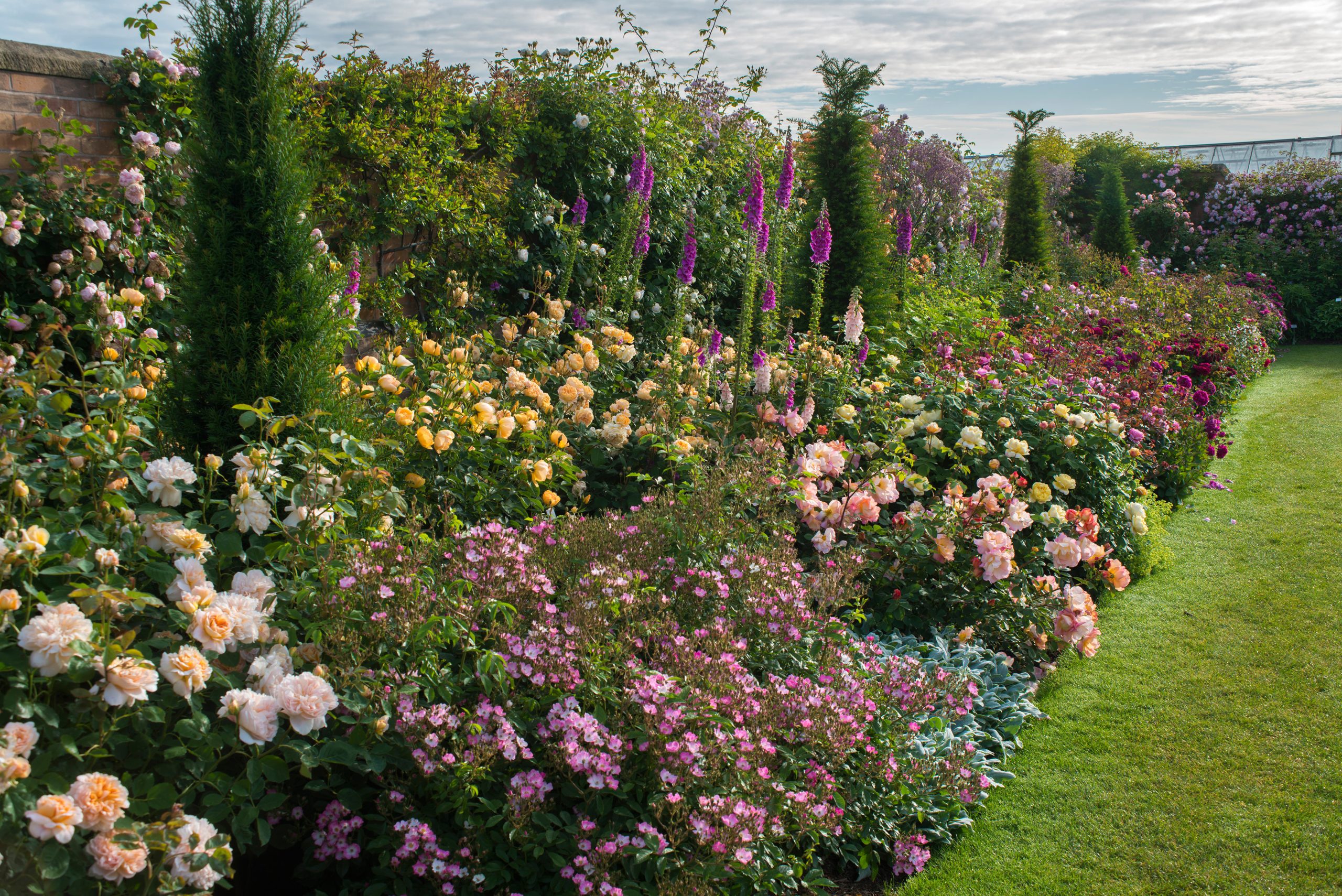
Create the Perfect Rose Garden
Roses are truly one of the most beloved garden plants. What is the first thing you do when you see a rose? You bend down to smell them! The charm of rose blooms draws you in to sample the scents whether they are floral, fruity, or spicy. Each spring we eagerly anticipate the unfurling of the first blooms that quickly amass and fill our gardens with exotic fragrances and a dazzling array colours all summer long. There are many types of roses, from miniatures that are ideal for patios, classic hybrid teas and shrubs that are ideal for borders, to climbers and ramblers that will soften structures like fences and buildings. If your space has about 4 hours of sunshine (either direct or indirect light) you can have success growing these garden favourites!
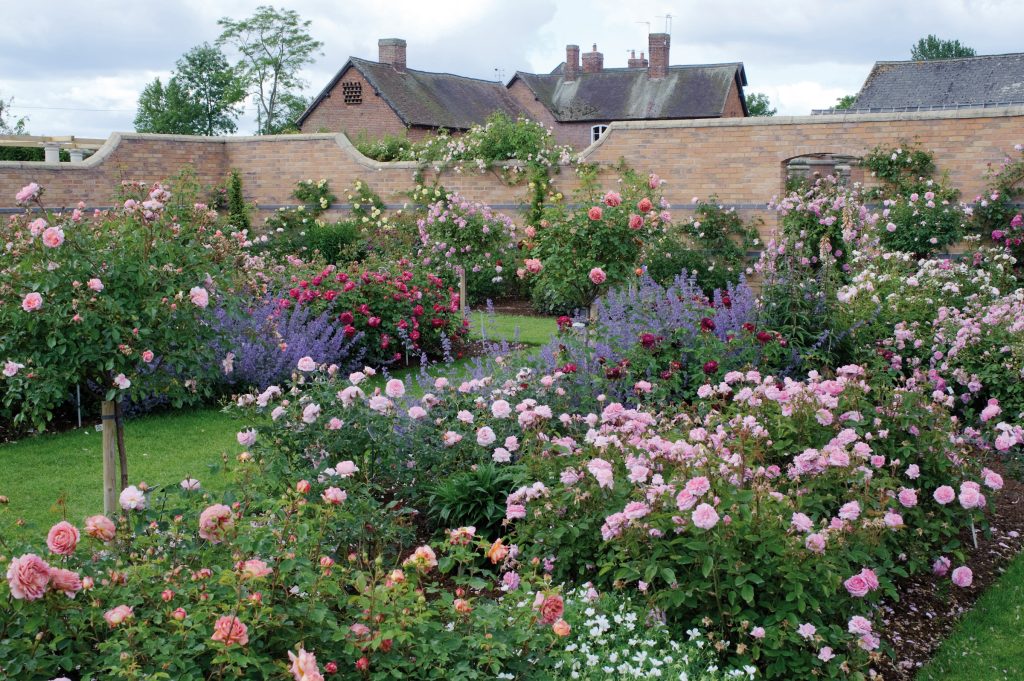
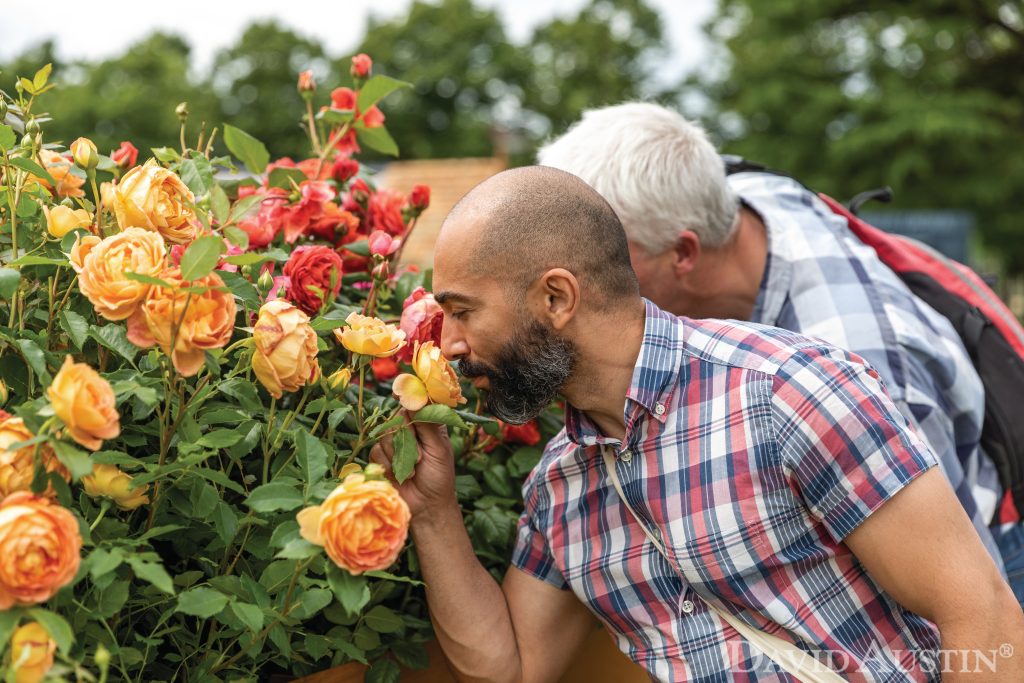
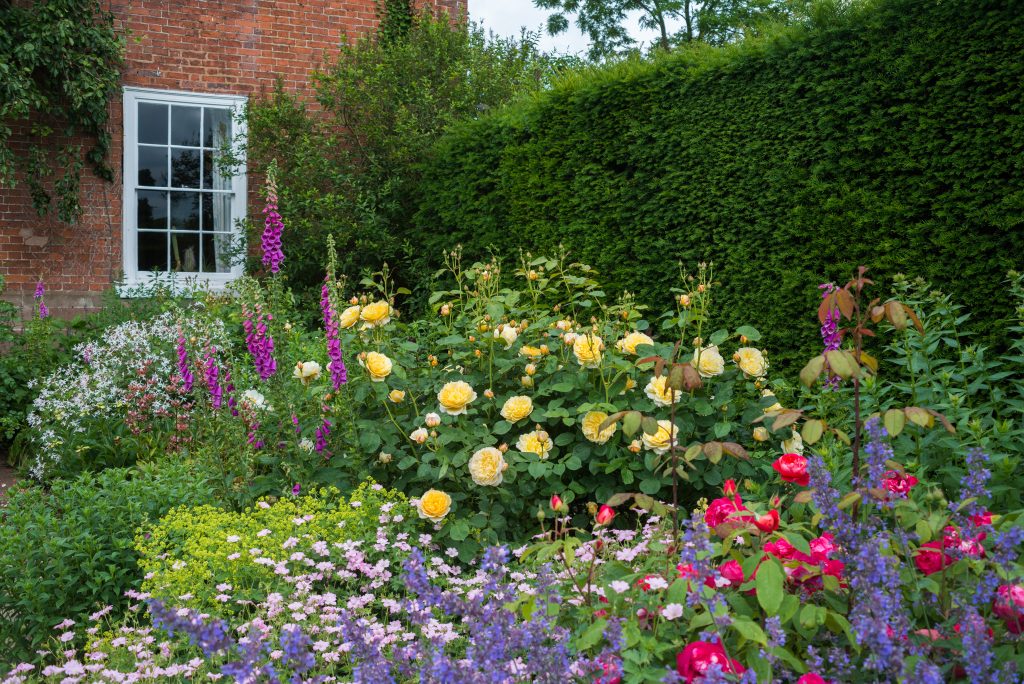
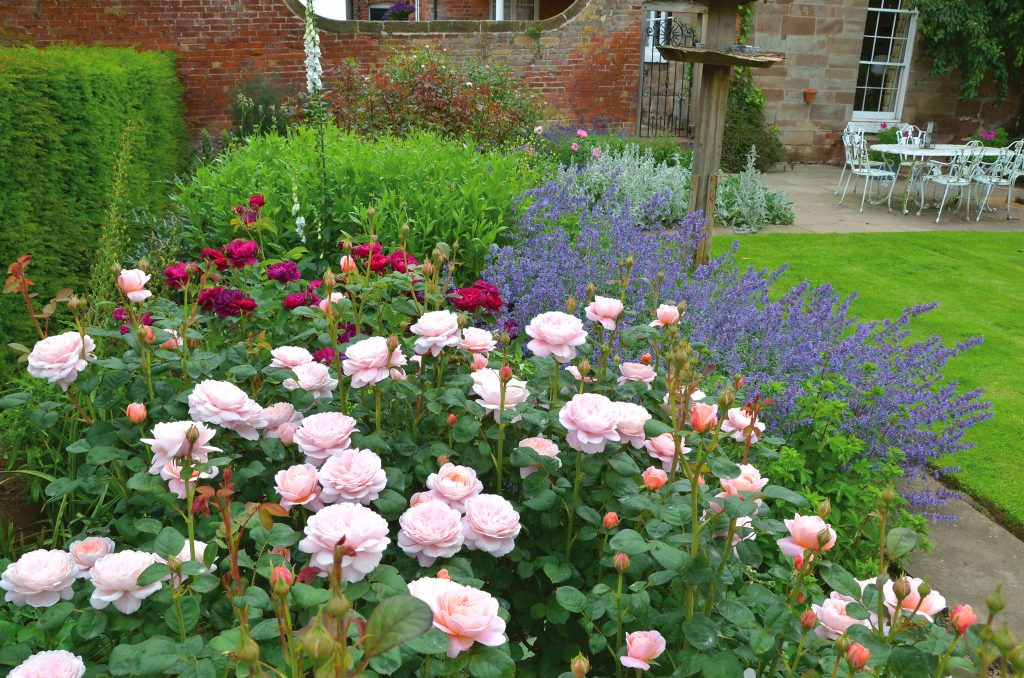
Table of Contents
David Austin Roses
Some of our favourite rose types are David Austin roses. These English bred roses set the bar for fragrance and repeat blooming during the summer. Among the varieties we love are Teasing Georgia, Falstaff, Munstead Wood, Olivia Rose Austin, Claire Austin and Graham Thomas, which was named the World’s Favourite Rose. These highly scented varieties are wonderful for bouquets of blooms to share with family and friends.
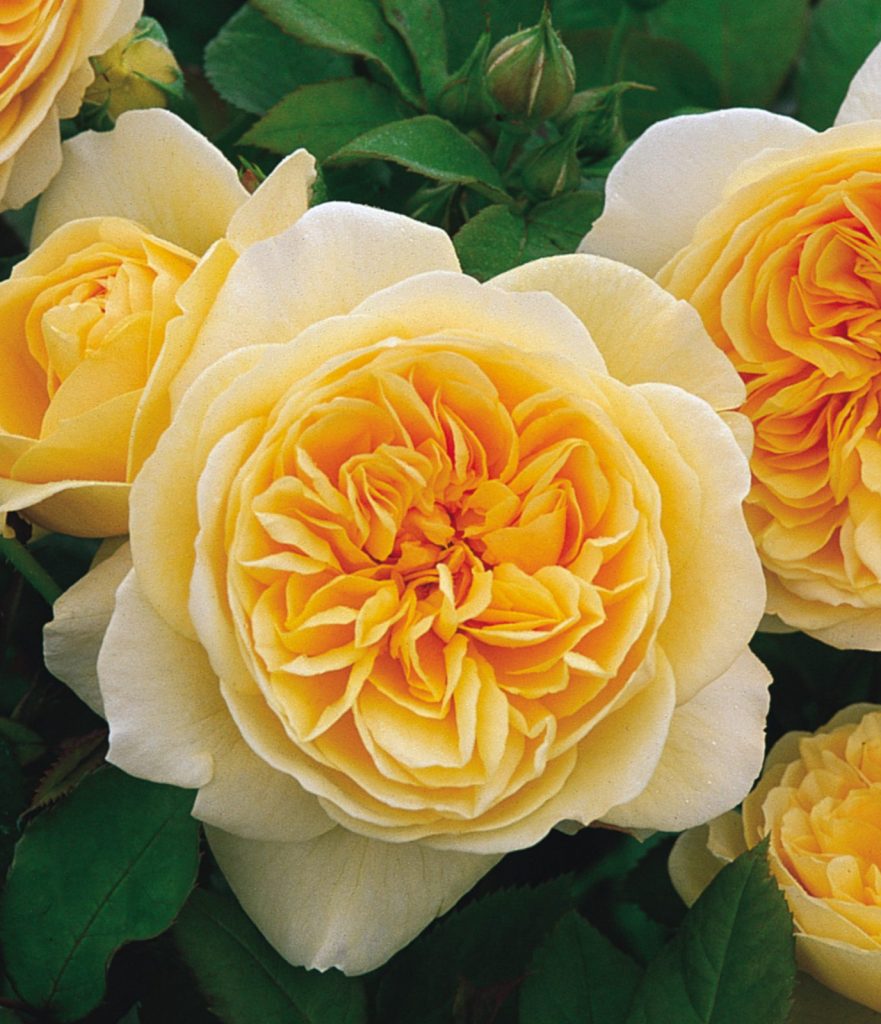
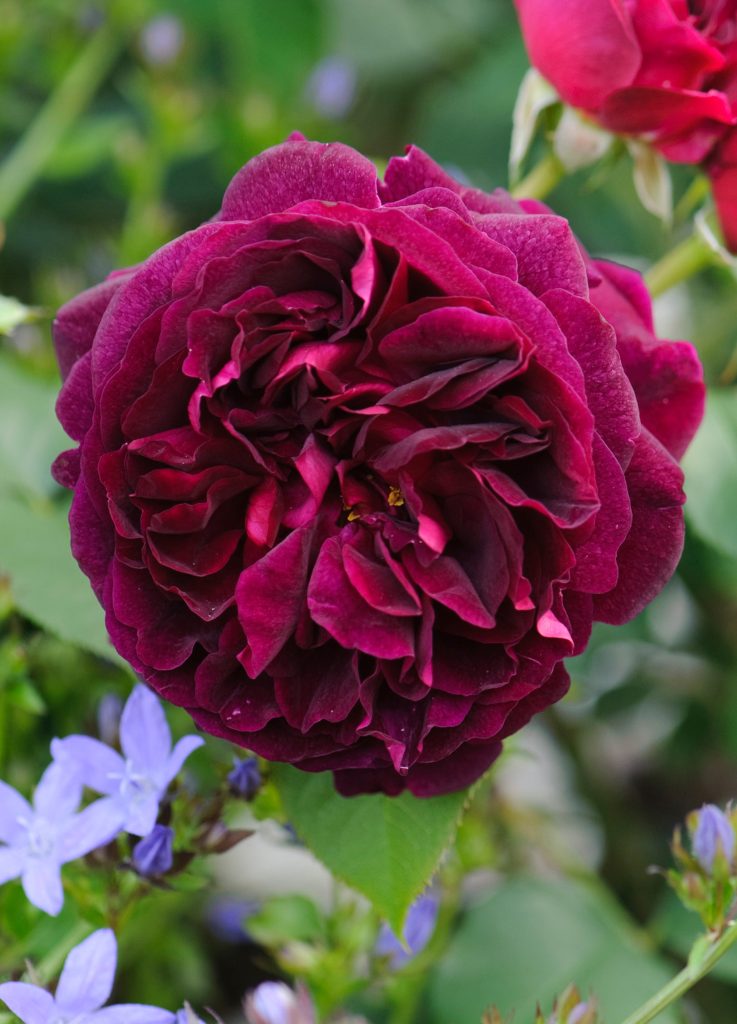
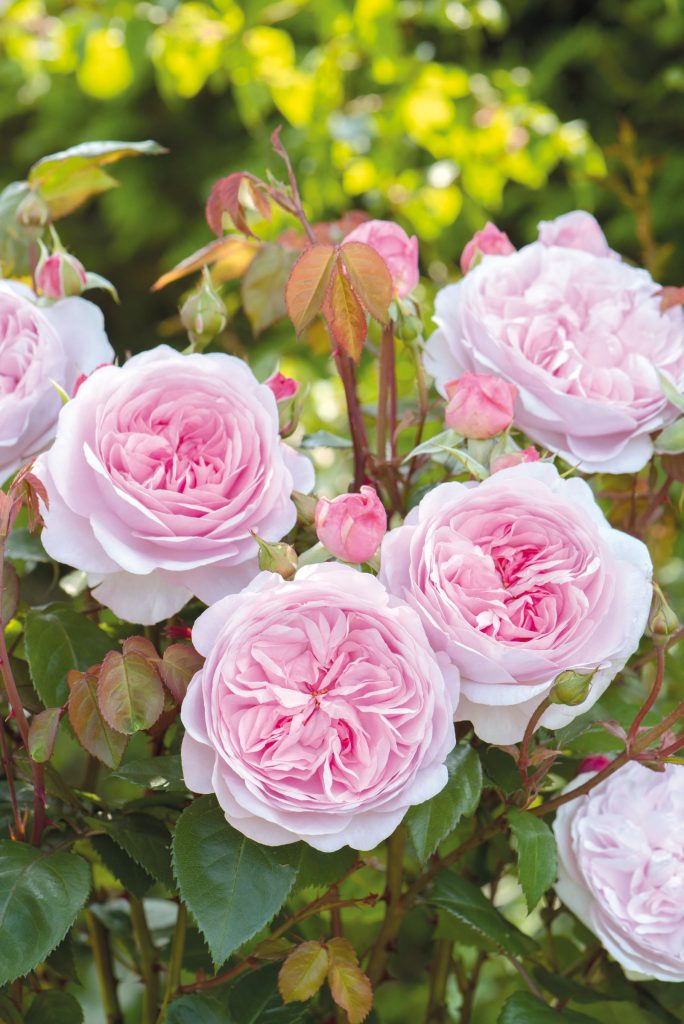
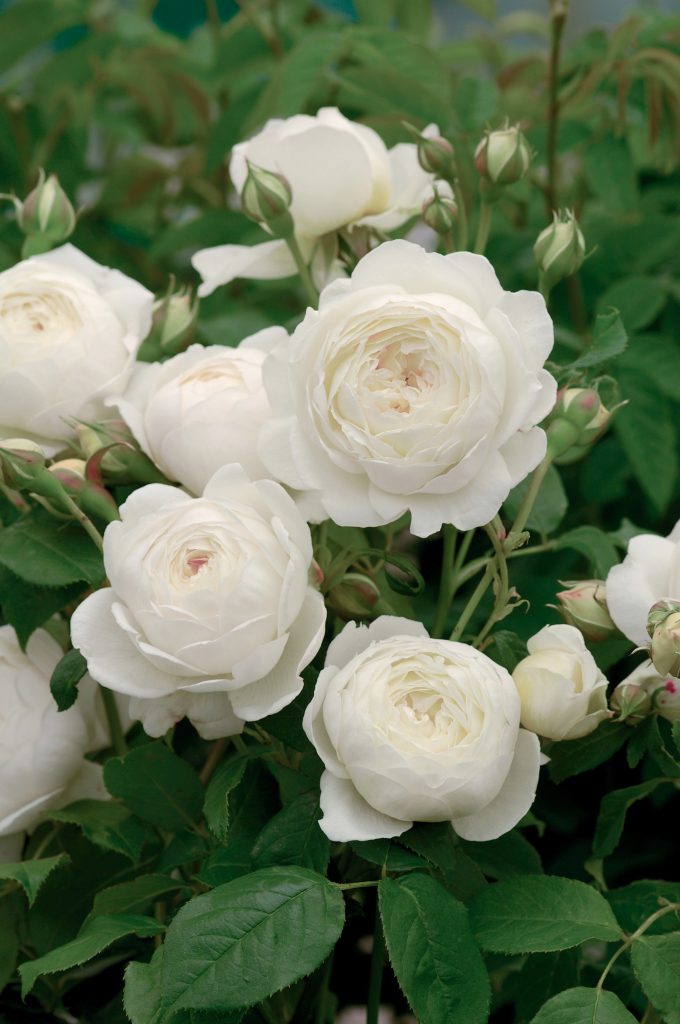
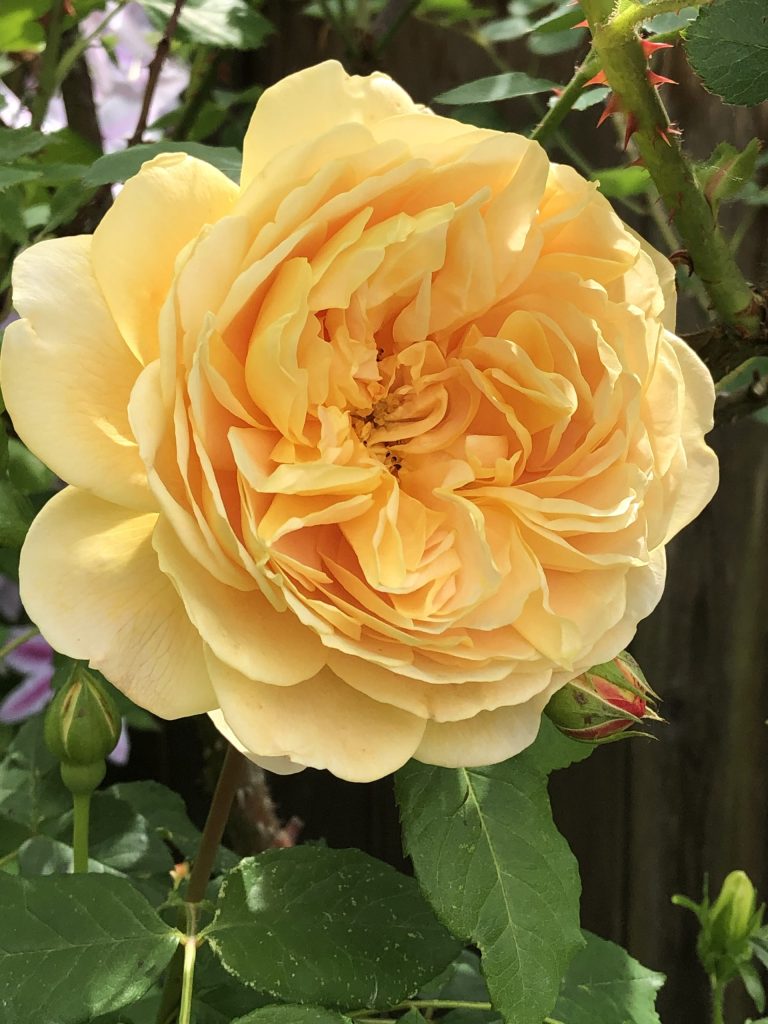
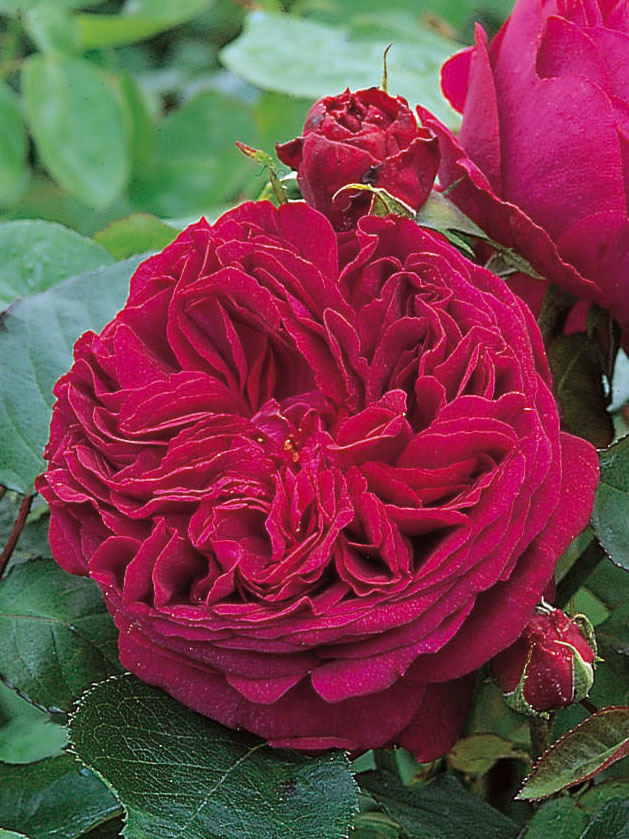
Weeks Roses
We also enjoy the stately hybrid teas, climbers, and miniatures from Weeks Roses. The range of colour combinations and patterns is amazing. The must-have varieties are Love, Ebb Tide, Legends, Purple Splash, and Tiddly Winks. These roses will have you resting and relaxing in your favourite corner of the garden to soak in the fragrance.
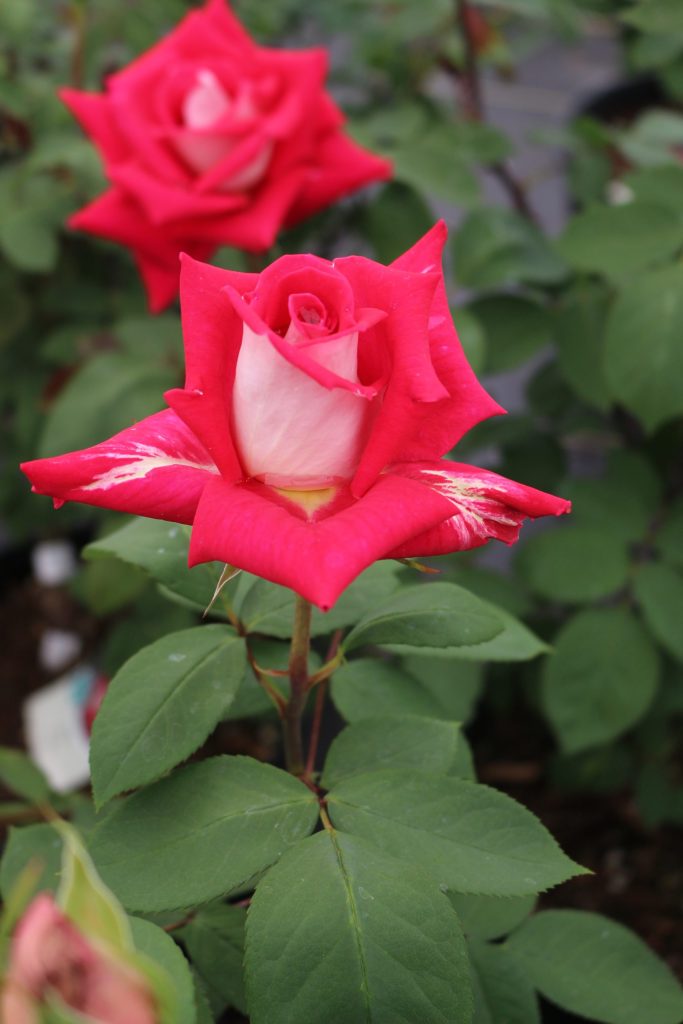
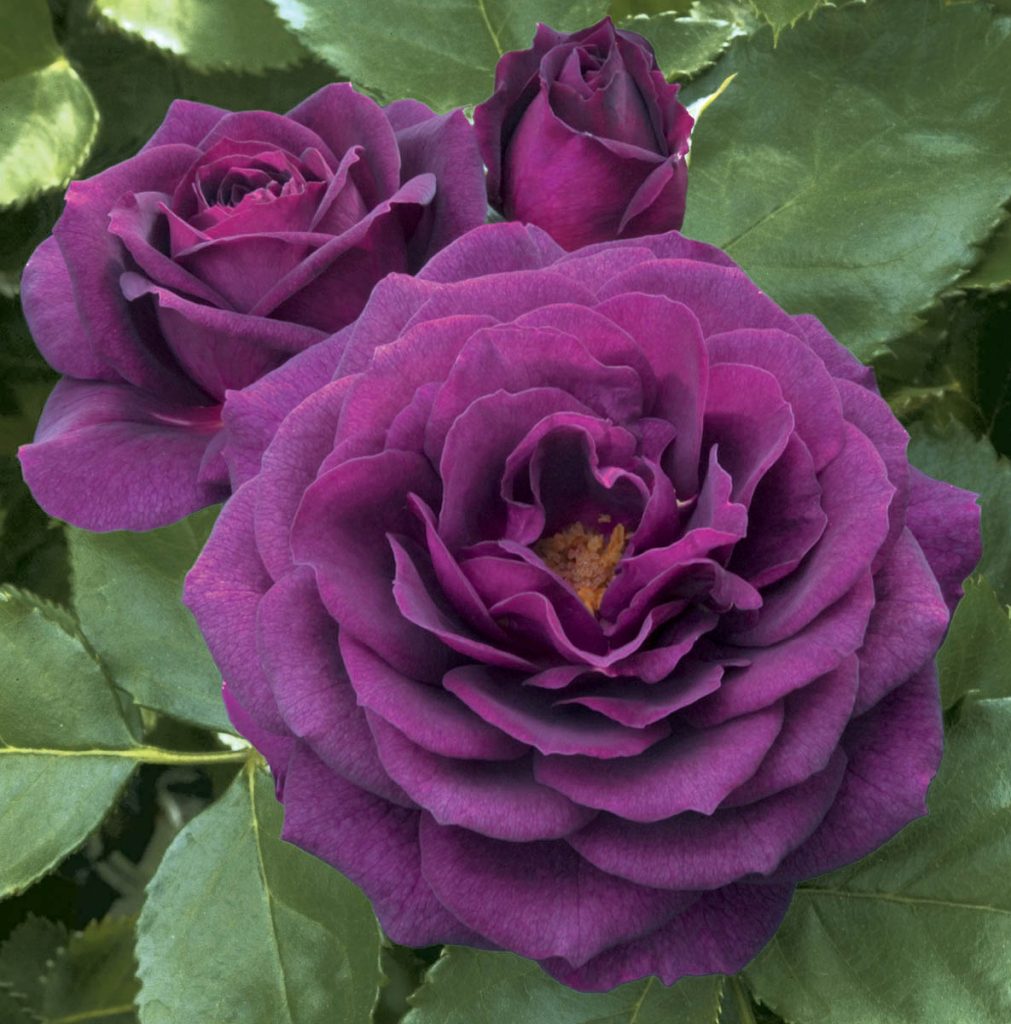

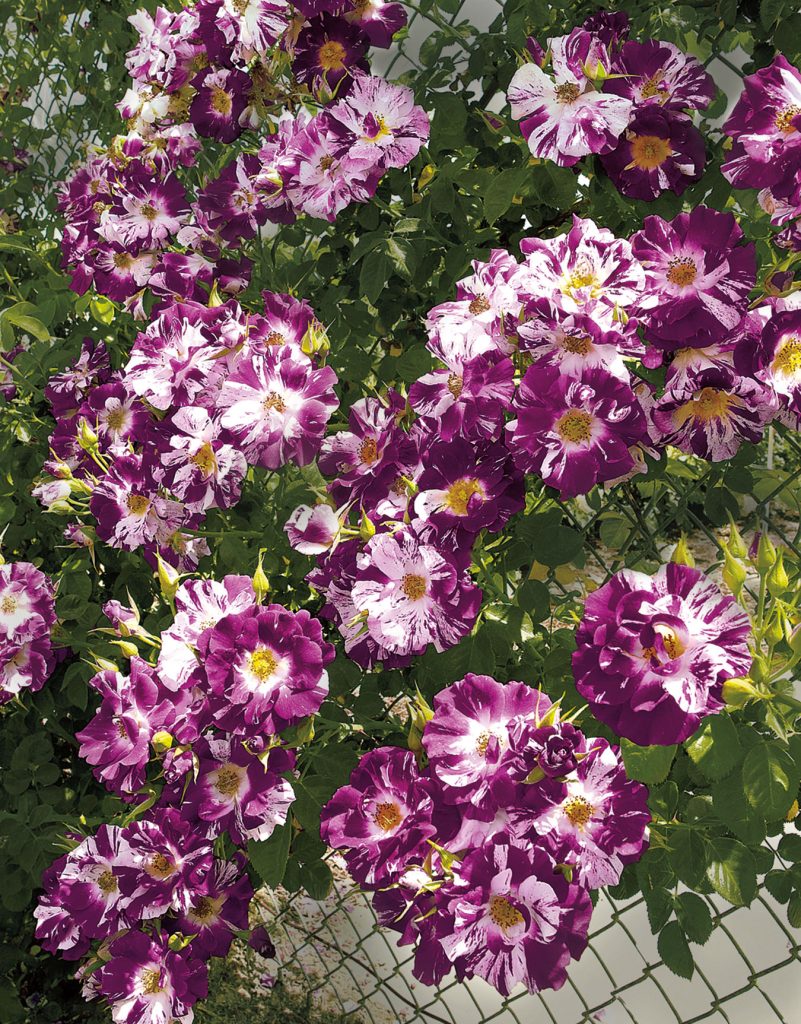
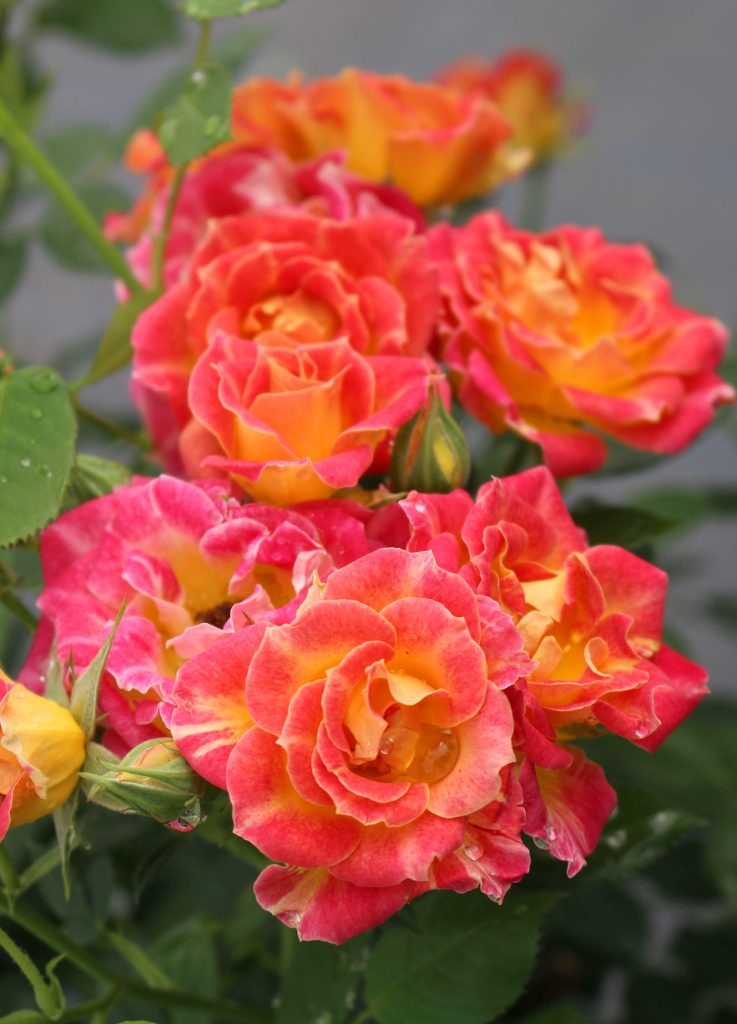
Star Roses
To fill all the other niches for roses in our gardens we look to Star Roses. Within their selection, we can find great options for ground cover, prairie hardiness, and dedicated cut flower grower selections. For low maintenance long-lasting blooms we plant Apricot Drift, Cherry Sunblaze and Purple Pavement. Our backyard cut flower growers look for varieties with long stems and lasting vase life. Their favourites are Princess Charlene de Monaco, Papa Meilland, and Yves Piget.
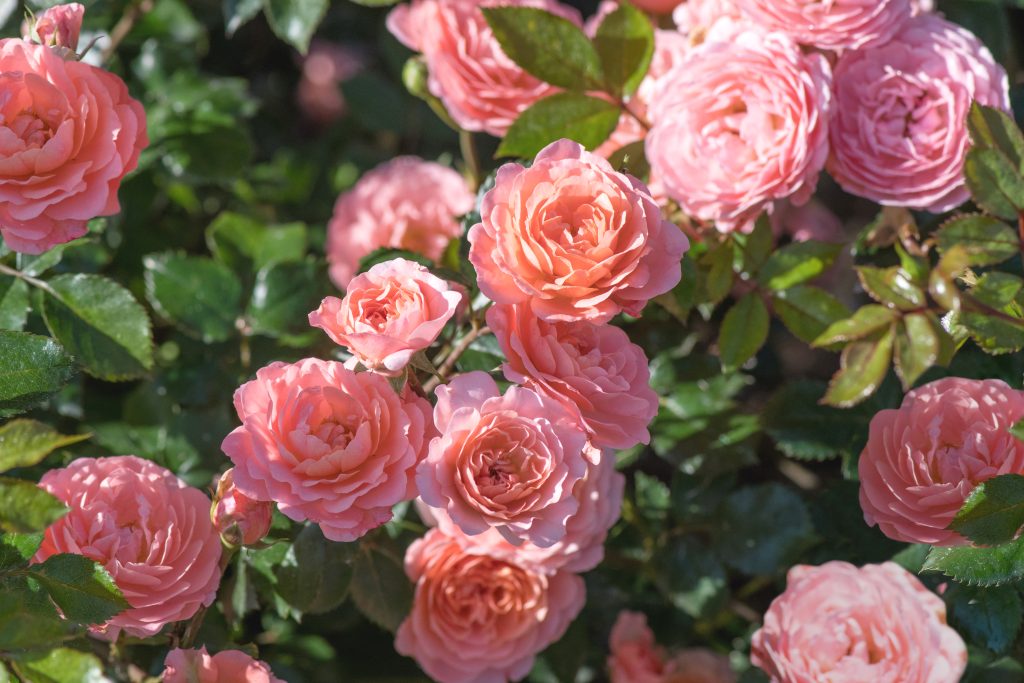
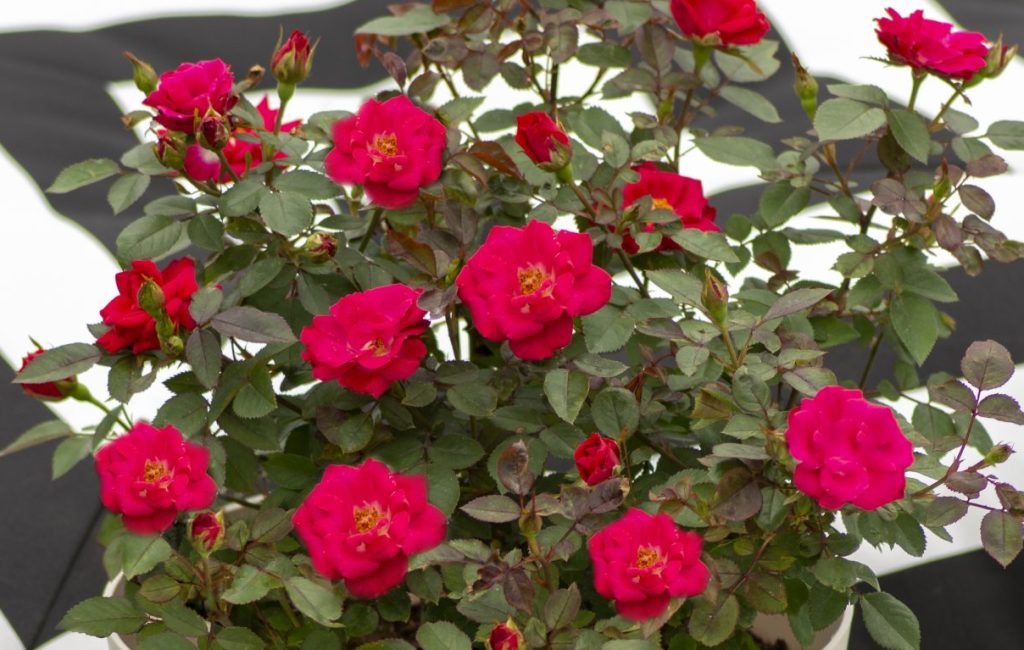
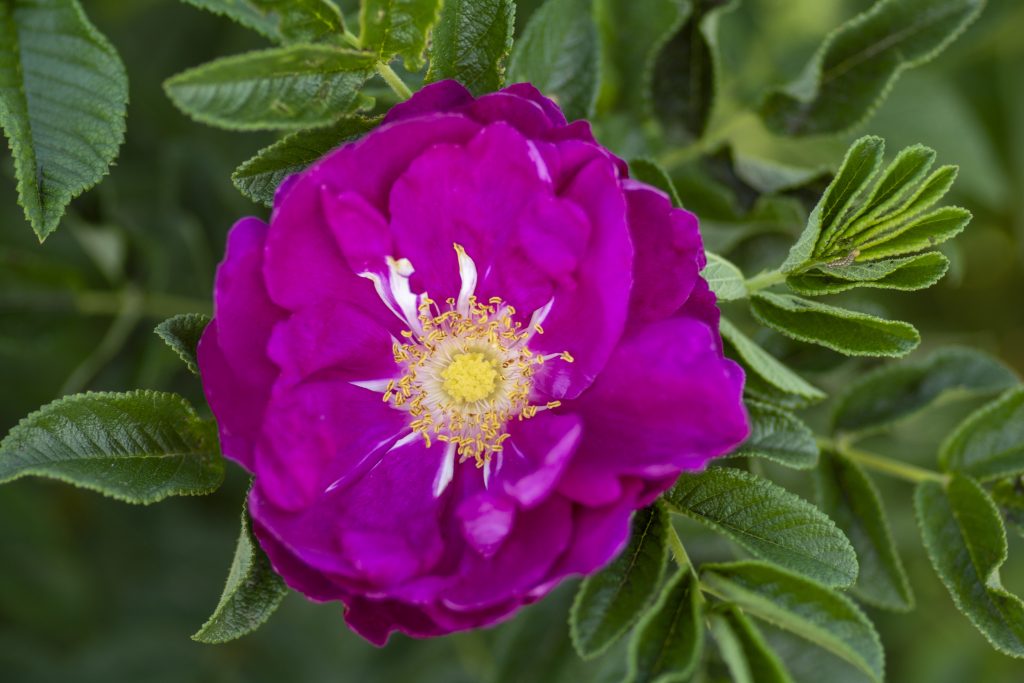
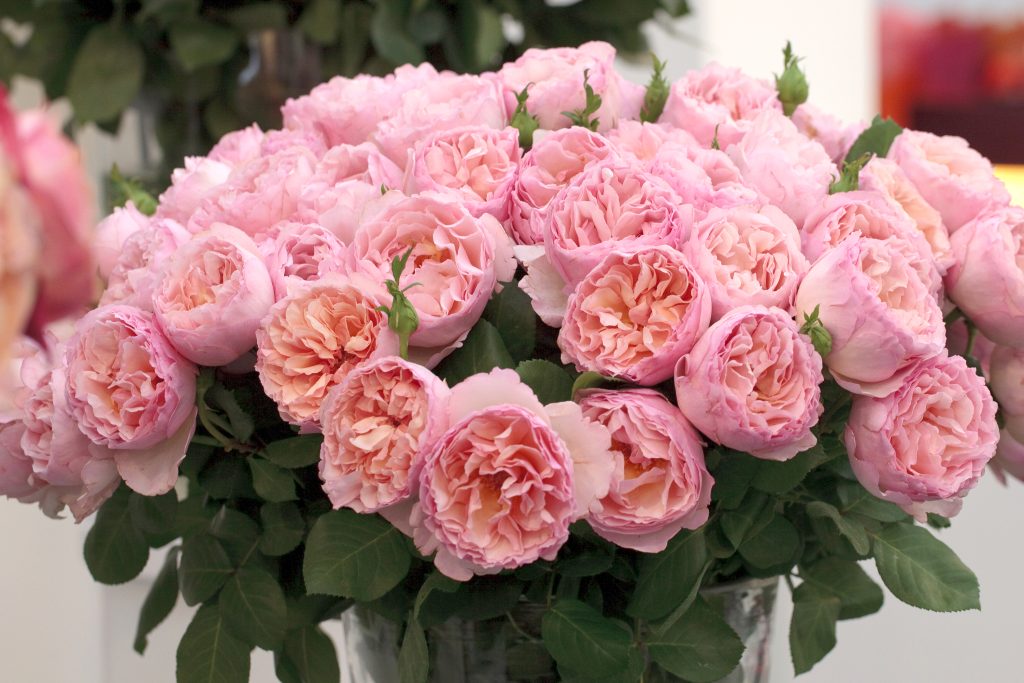
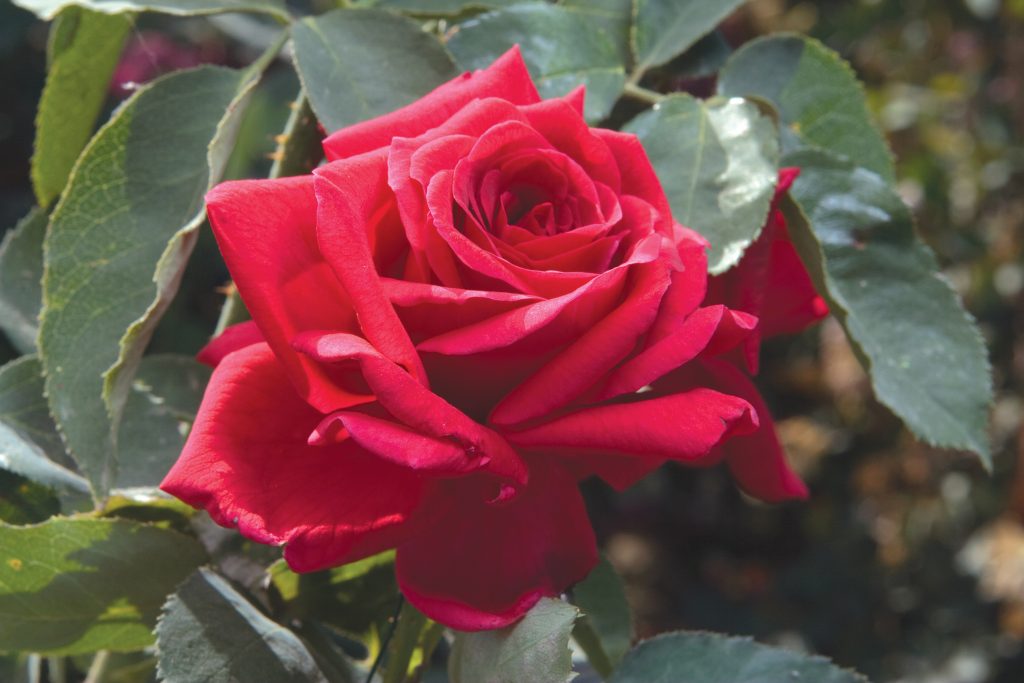
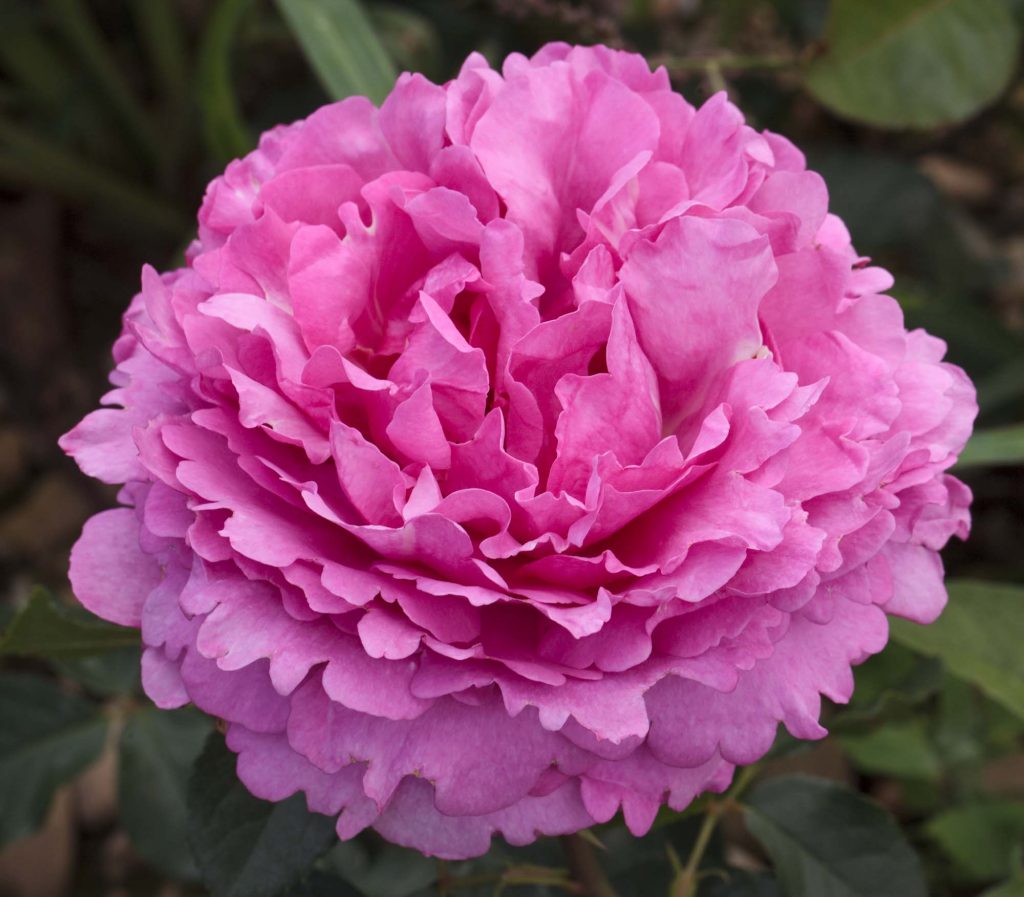
Companion Plants for Your Roses
So, with all these amazing roses to choose from how do we showcase them in our garden borders and beds? By interplanting them with companion plants! Just like people, plants flourish when they have complementary ones near them. Some varieties of plants will attract beneficial insects, others will help ward off pests, and some fragrant companions will even enhance the fragrance of the roses. When planning or adding to an existing garden design, consider foliage textures, bloom shapes and contrasting or complementary colours. Before creating your garden list, examine your garden space to see what is working and what you would like to improve. In making design plans, consider the path your eyes travel in your garden. We are all struck by show-stopping colours but ponder the support plants and how they can make a great area of the garden amazing.
When we plant in the garden, we move through three height levels and spaces: the front or border edge, the middle of the border and then the back of the border. The good news is we have rose companion solutions for each of these garden areas.
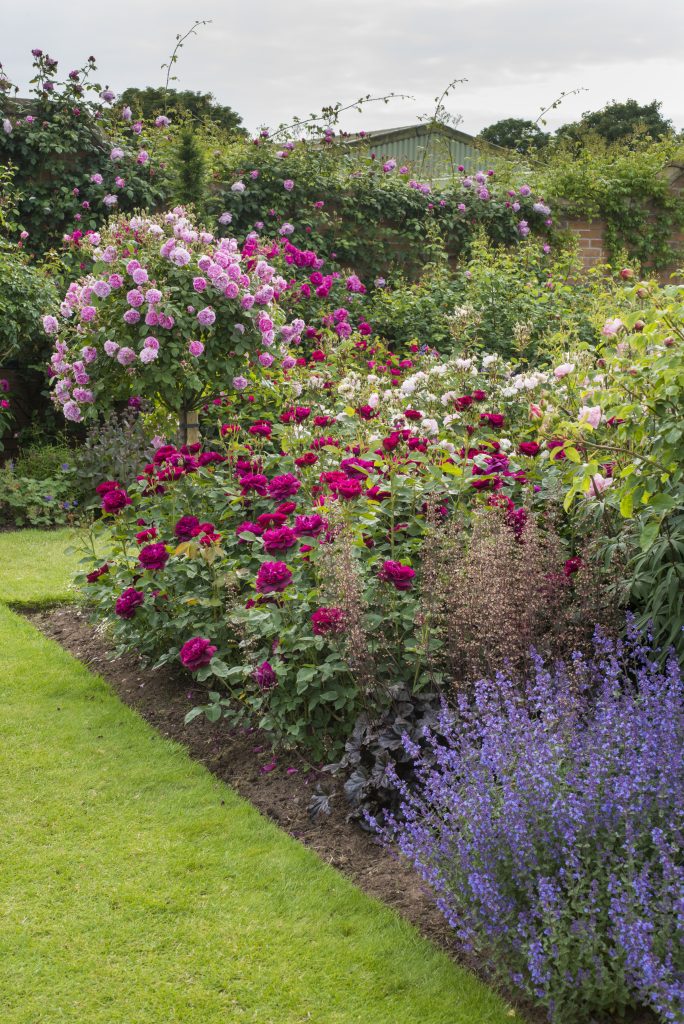
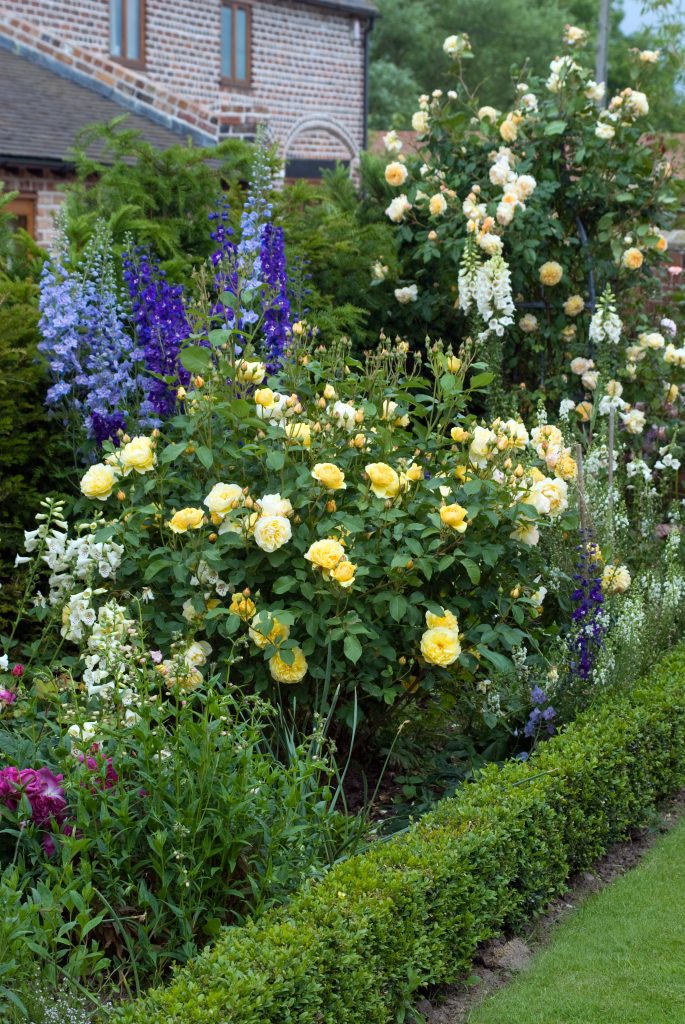
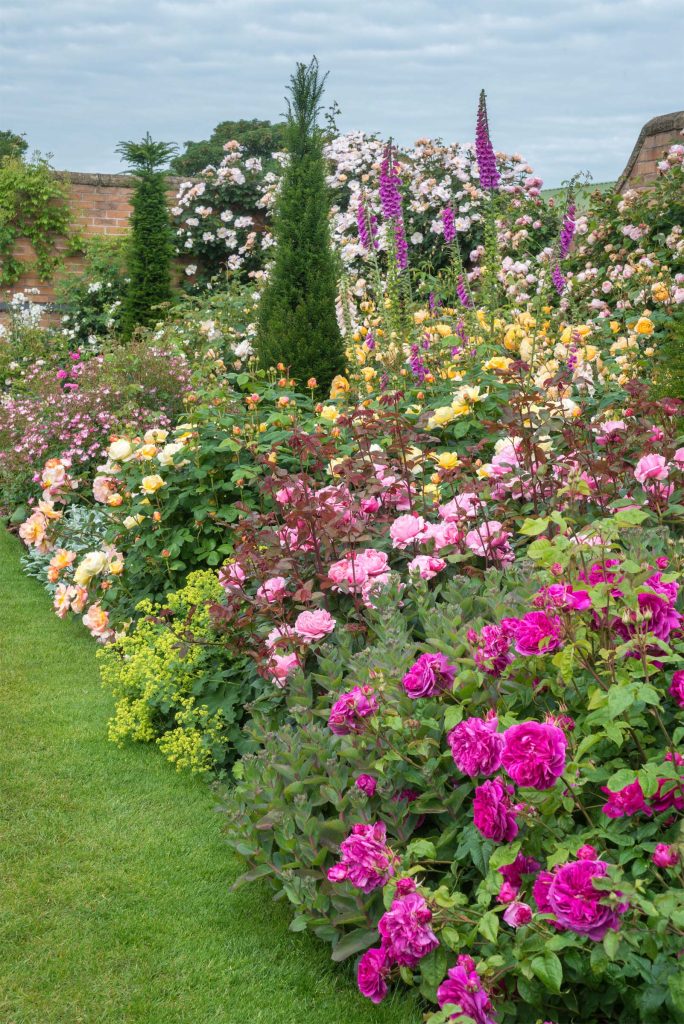
Front of the Border Companions
The front of the border is where the eye commonly starts its journey, and this is a perfect area to have ground covers and short growing perennials. Some of our favourite choices for the front of the border are Alchemilla, Aquilegia, Dianthus, Lavender, Salvia and Phlox.
Alchemilla mollis also known as ladies mantle grows to 40 cm (16”) and has wide scalloped leaves with fluffy chartreuse green blooms. It checks so many boxes on our checklist, with the contrast in bloom colour and foliage shape. As an extra bonus, the blooms look like lime green Baby’s Breath which makes them an ideal addition in bouquets.
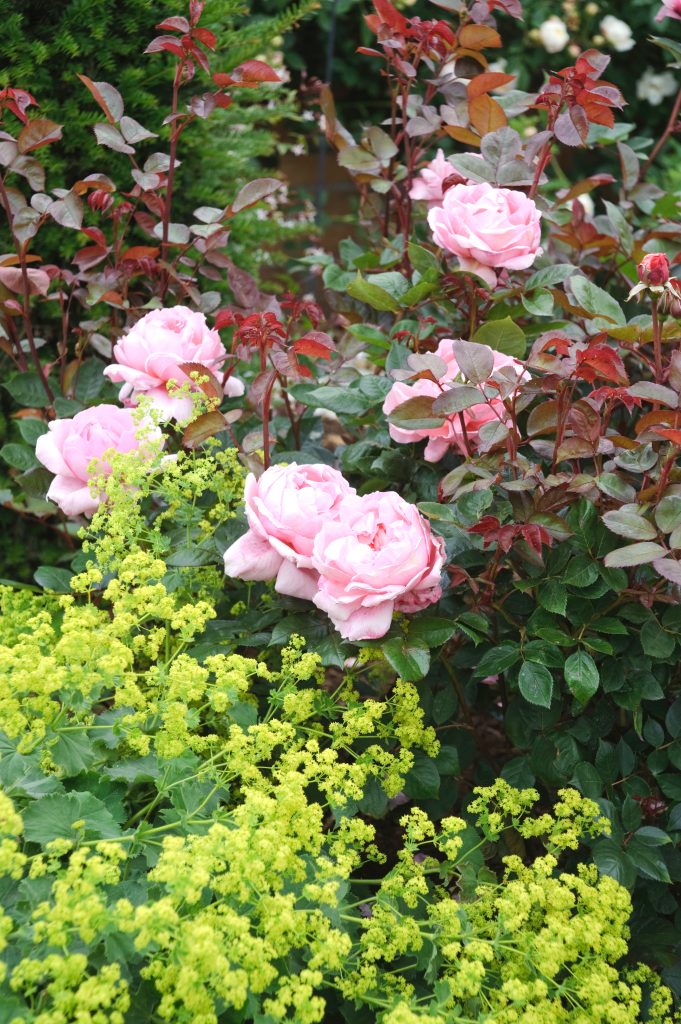
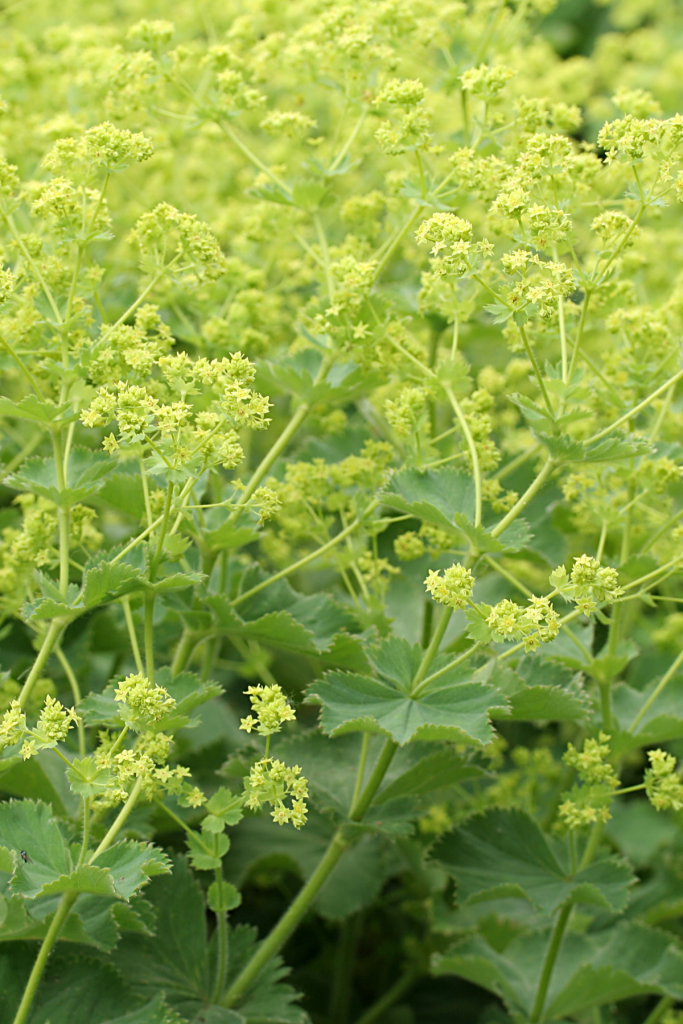
Aquilegia Origami series, also known as columbine, are carefree flowering perennials which are easy to grow. The ‘Origami’ series is filled with bold duos of blue, pink, yellow, and white and grow to 45 cm (18”). These blooms invite the late spring pollinators into the garden. Once the blooms have finished, allow the seed heads to form and then sprinkle the ripe seeds in the border areas for more and more plants.
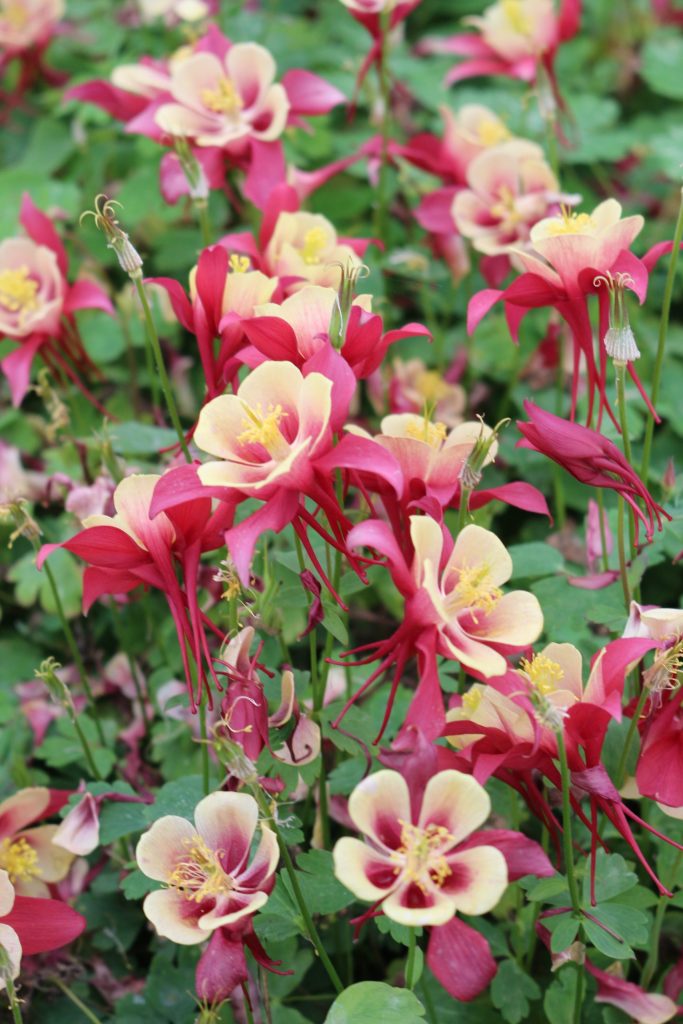
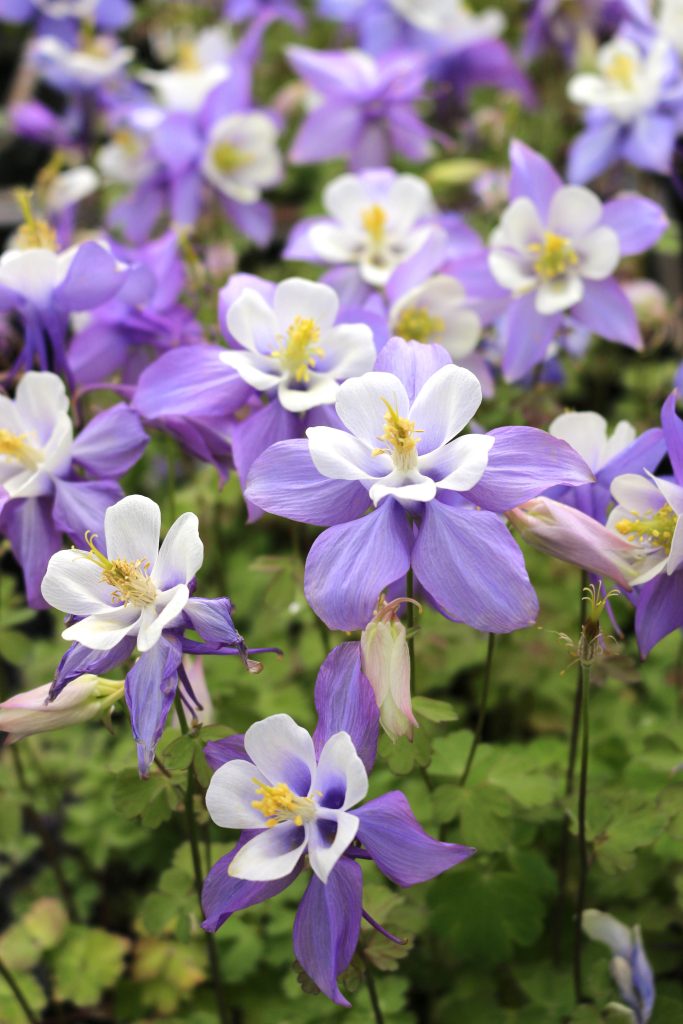
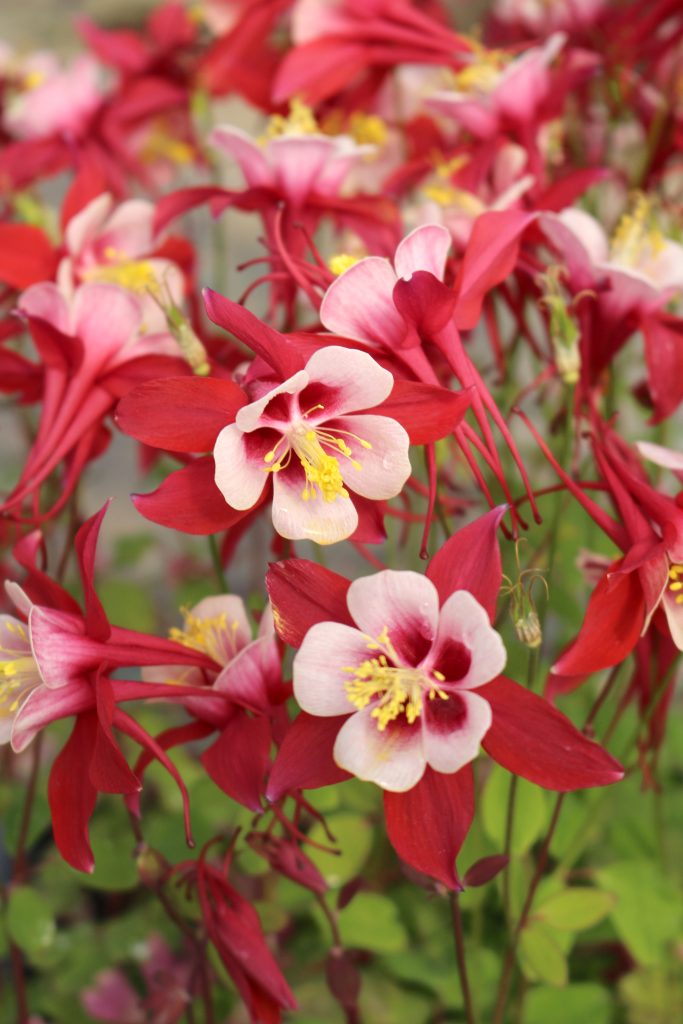
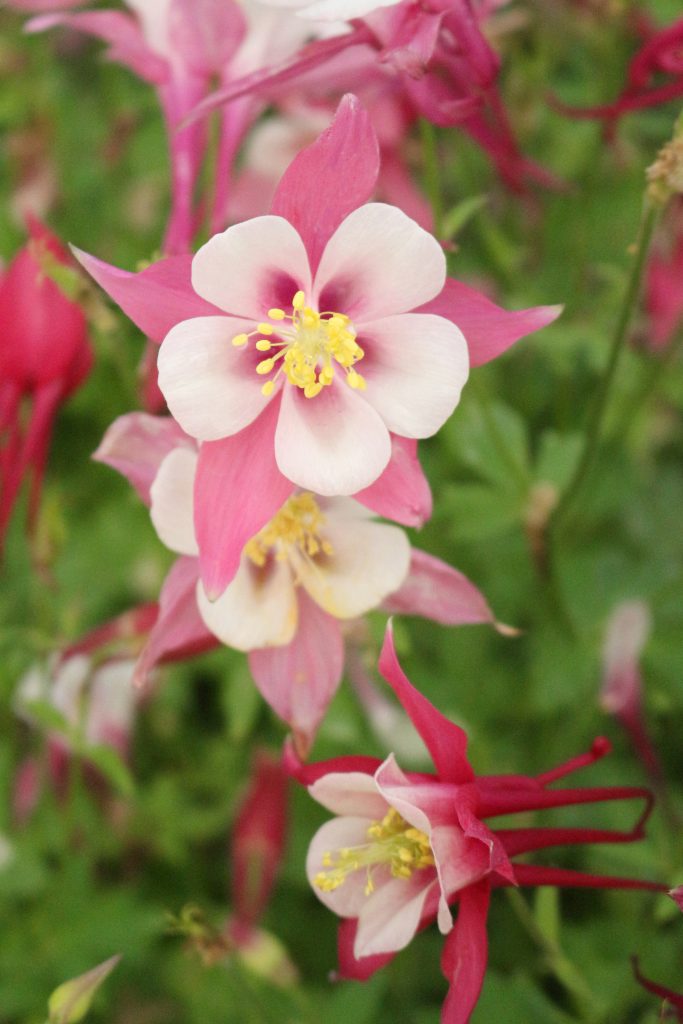
Next is Dianthus. Commonly called Pinks, they have delightful cinnamon-scented blooms that enhance the spice notes of roses. These beautiful hardy perennials grow into mounds approximately 15-25 cm (6-10”) tall and wide. As the shorter and more petite versions of carnations, they have the same frosty blue-green foliage which will add great colour contrast.
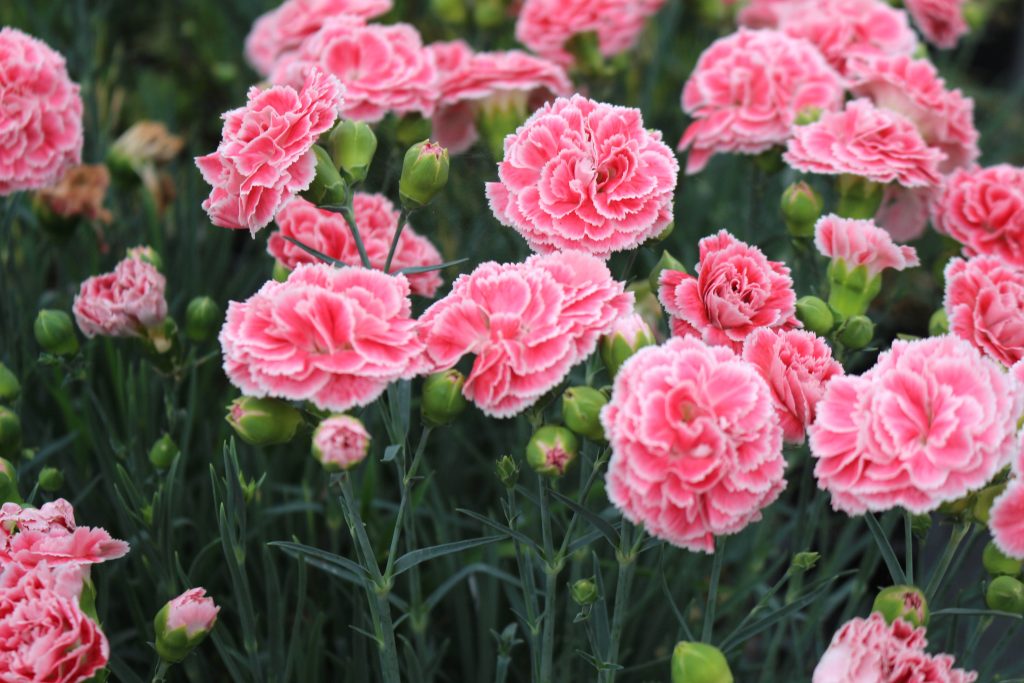
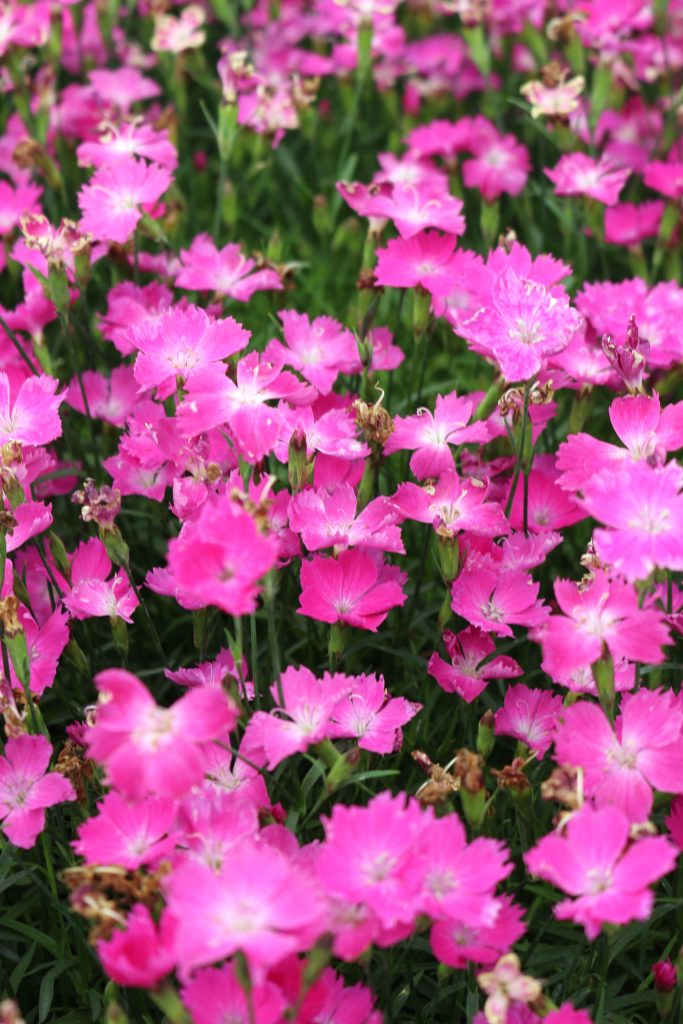
Lavandula angustifolium (Lavender) is a classic pairing with roses. The thin stems of blooms and grey-green foliage, contrast in colour with bold rose colours and softer tones alike. As an extra benefit, the lavender fragrance will deter four-legged garden pests from your rose garden while attracting beneficial pollinators.
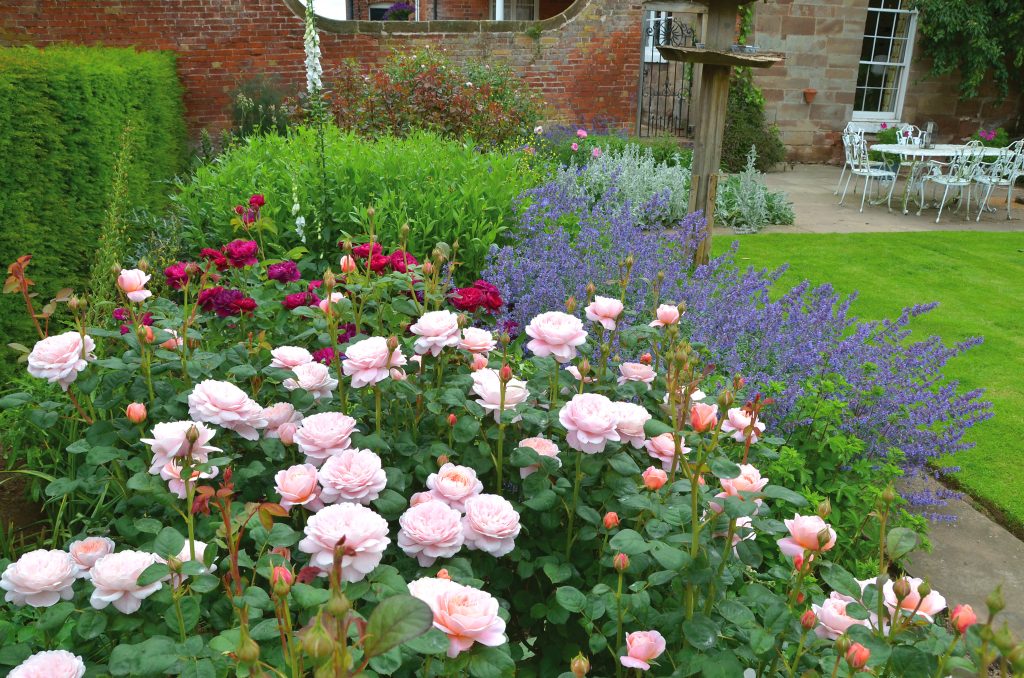
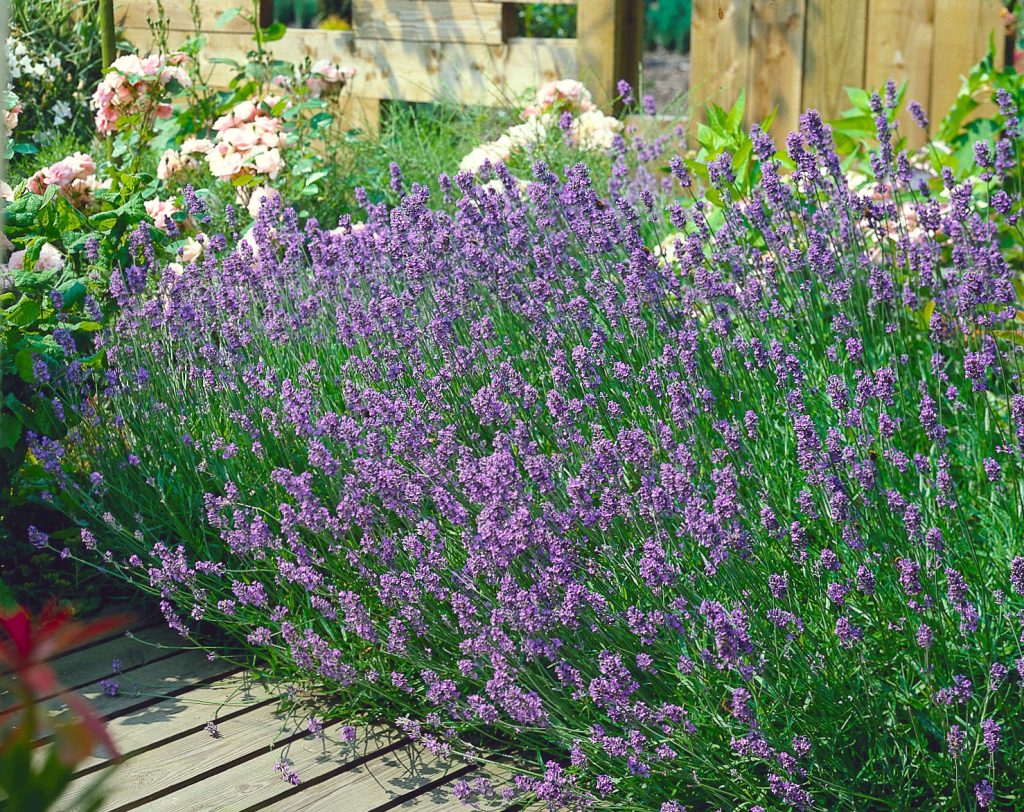
Other great companions for the front of the border are:
- Hakonechloa All Gold
- Echinacea Lemon Drop
- Festuca Elijah Blue
- Heuchera Carmel, Midnight Rose, Lime Rickey, Plum Pudding
- Geranium Johnson’s Blue
- Lilium asiatic Tiny Series especially: Tiny Epic, Tiny Poems, Tiny Icon
- Phlox subulta Candy Stripe, paniculata Flame Series
- Salvia Marcus, Snow Hill, Rose Marvel
- Veronica Sunny Border Blue
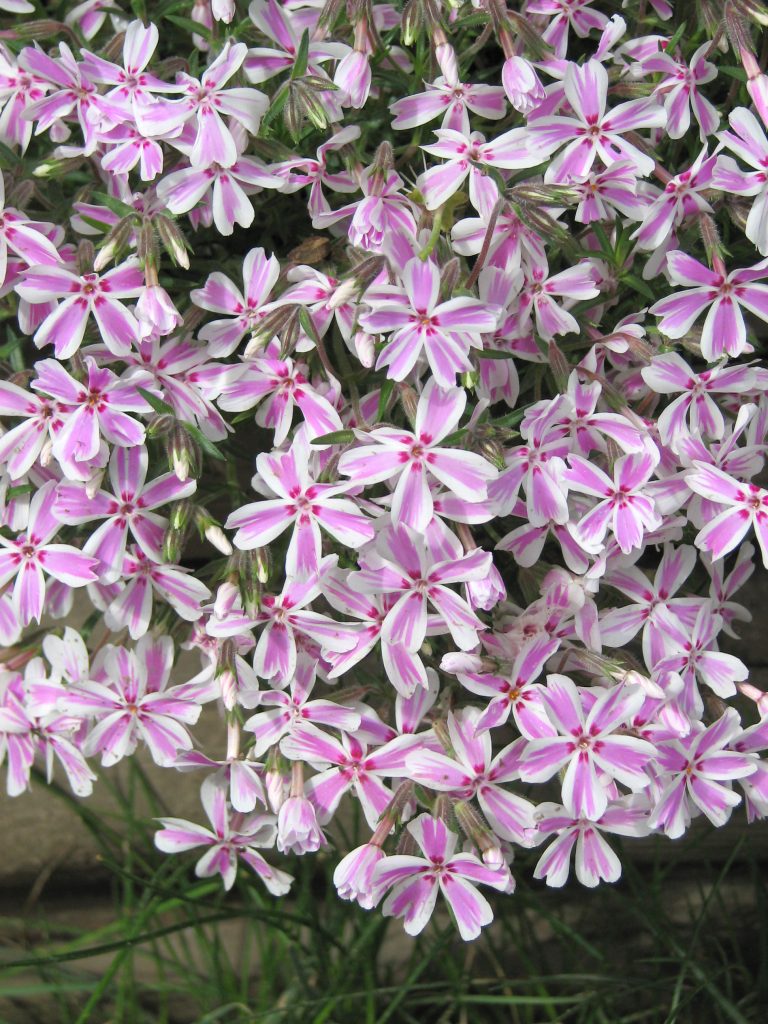
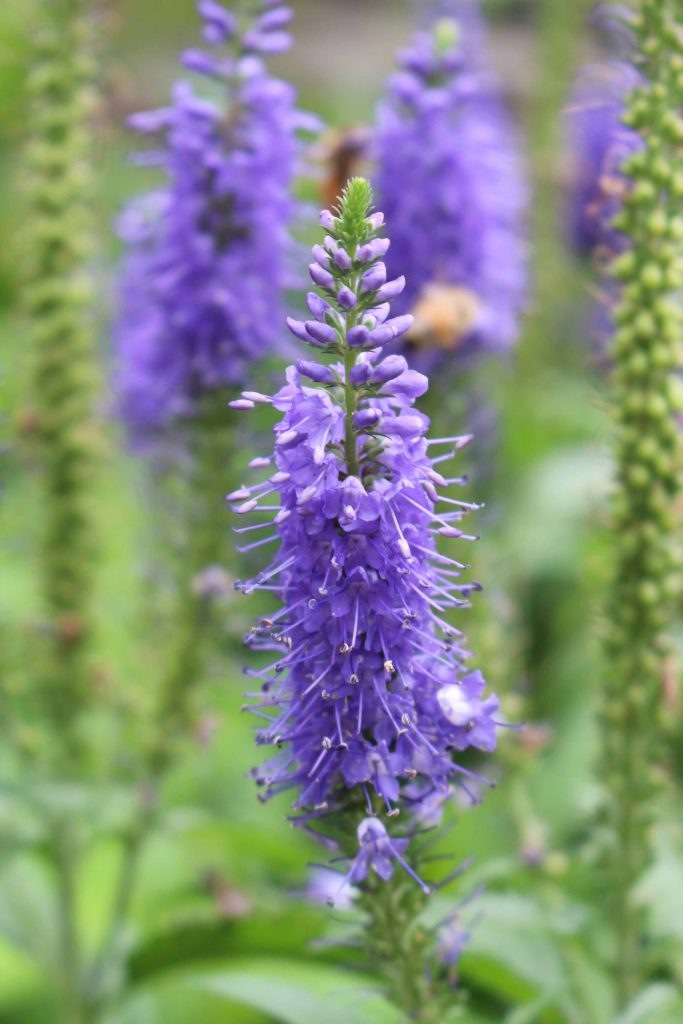
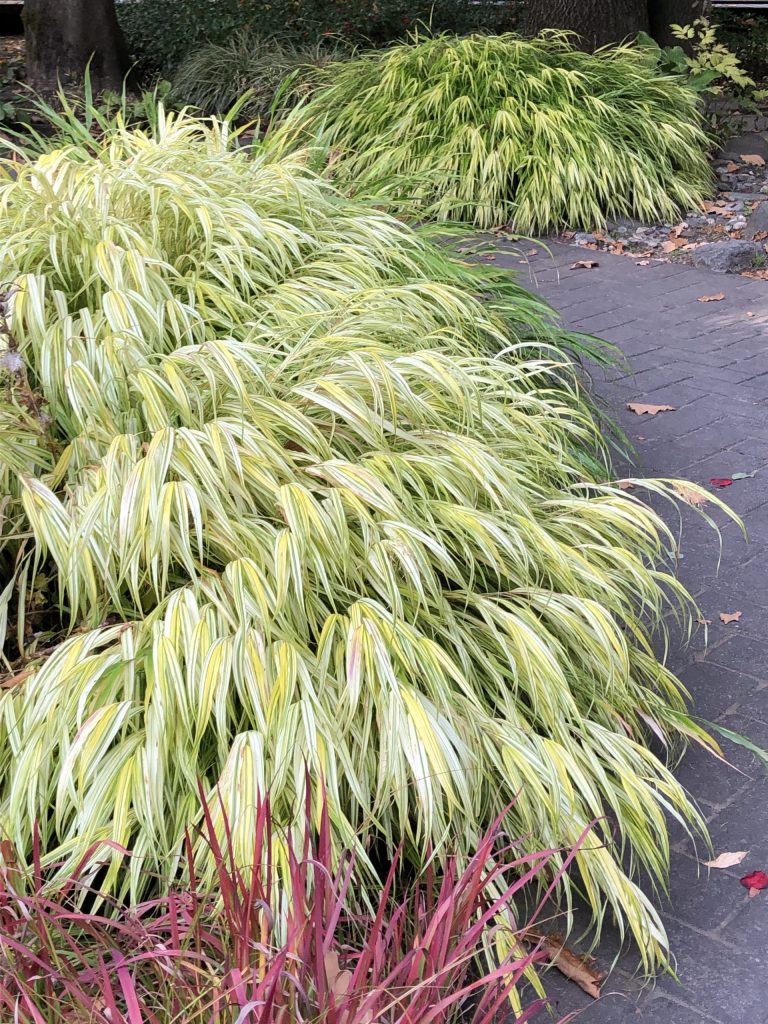
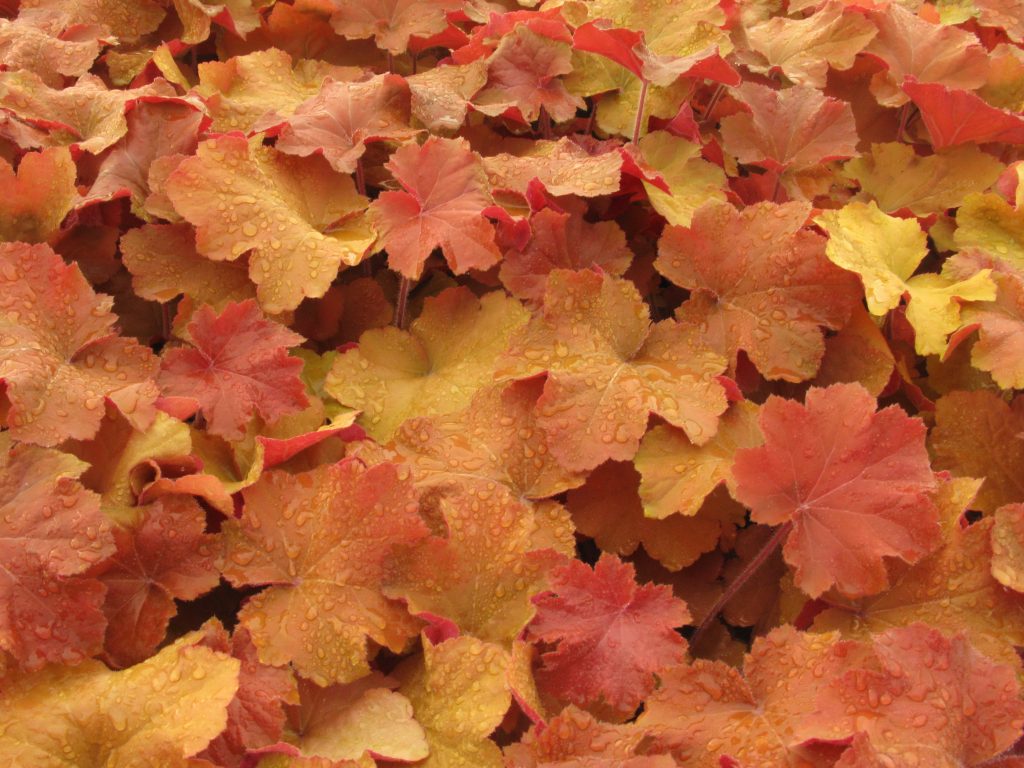
Middle of the Border Companions
Middle of the border is where all the magic happens. Roses that grow in a shrubby bush shape including hybrid teas, floribundas, and many David Austin types, will be planted in the middle of the border. Therefore, select complimentary plants that highlight your roses and give long-lasting colour. Consider a variety of bloom shapes and foliage colours that you will plant between your roses. Remember to add some varieties for cut flowers too – if they look great in the border together, they will be amazing in a vase too! Some of our go-to varieties are alliums, liatris, oriental lilies and rudbeckia.
Ornamental garlics Allium Giganteum and Mount Everest are planted in the fall and bloom from late spring to early summer which makes them great transition plants. These tall varieties grow from 90-120 cm (36-48”) tall and make a statement when they are planted in groups of 5 to 7 bulbs. The spheres of blooms will attract pollinators and at the same time help deter garden pests like squirrels, deer, aphids and Japanese Beetles.

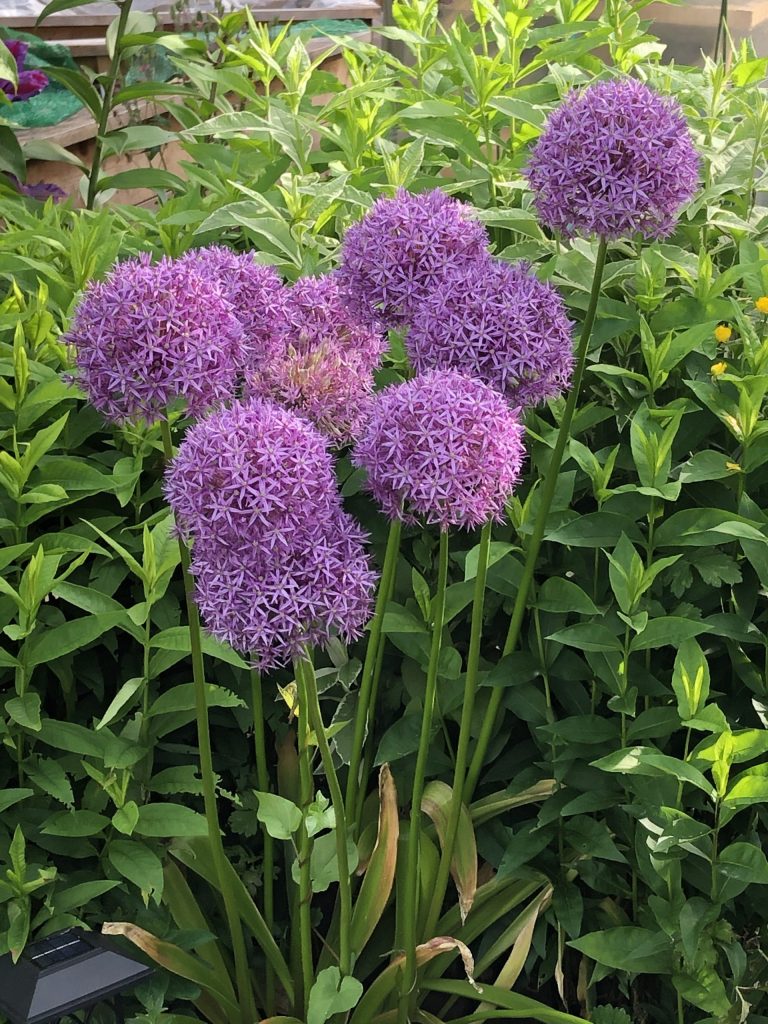
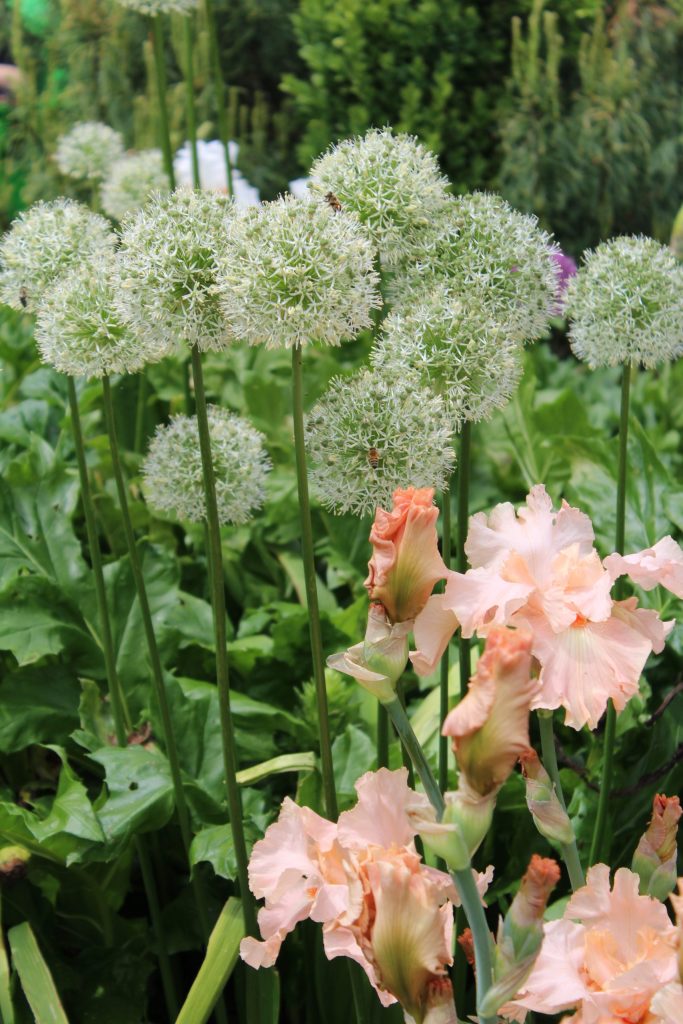
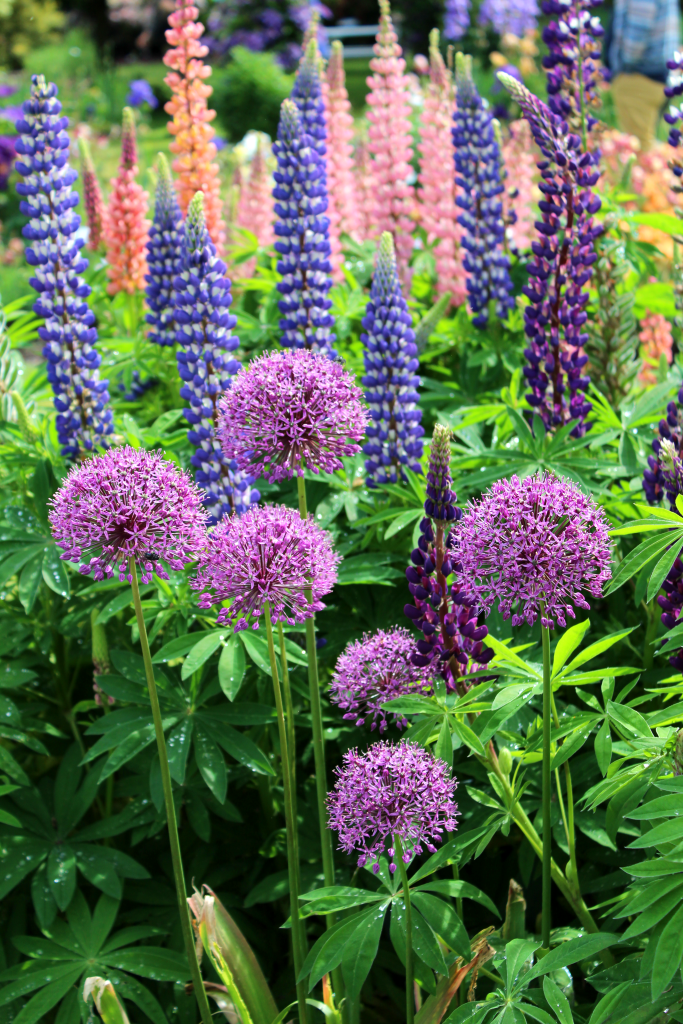
The tall spikes of Liatris spicata will add drama and height to the mid border. Blazing Stars grow to 90 cm (36”) with bursts of bright violet-purple blooms. Plant these hardy perennials in clusters of 5-10 bulbs and the spires will attract butterflies and bees from June through August. In the fall prune the faded brown stems to soil level and they will sprout again next spring.
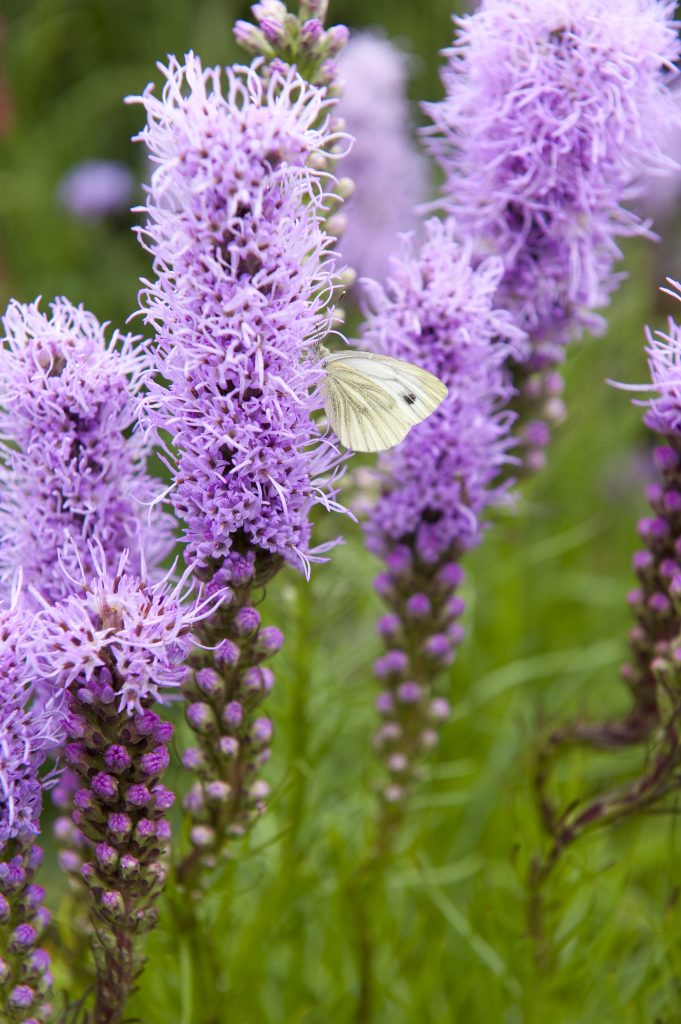
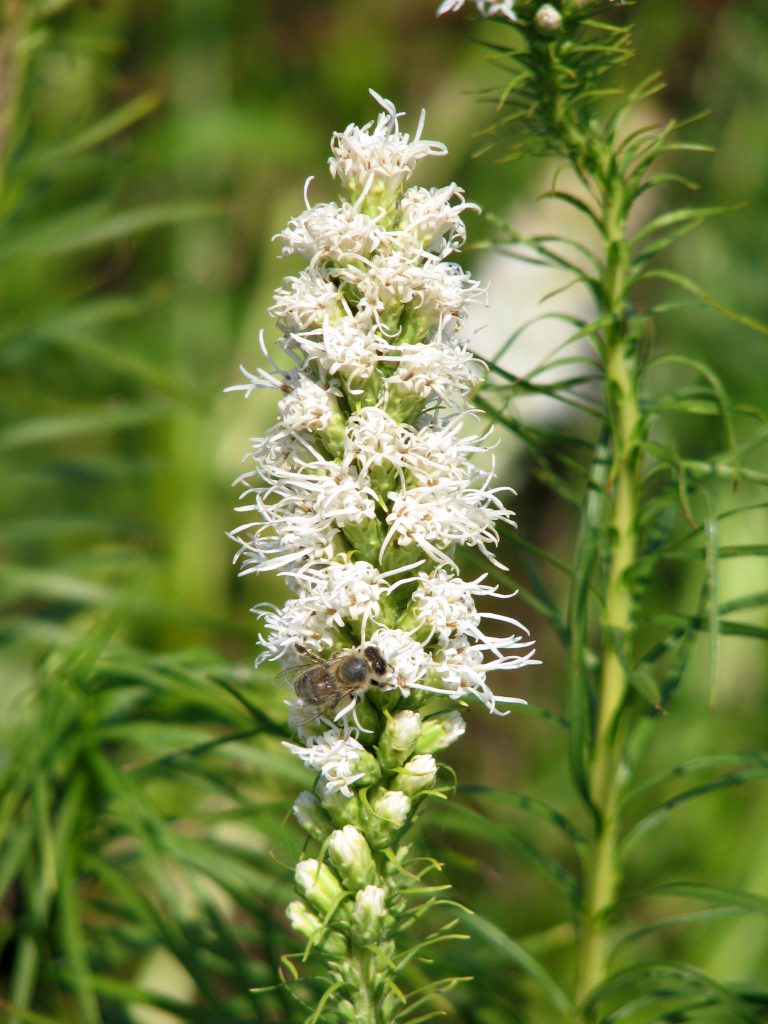
The heat of summer is when oriental lilies like Salmon Star bloom and fill the garden with their sweet perfume. These lilies are garden classics and will bloom from late July through August. Their tantalizing scent will mingle and amplify the fragrance of your roses. When you first plant lilies in the garden give the bulbs space to grow and multiply and in a few short years you will have a larger patch of lilies to enjoy.
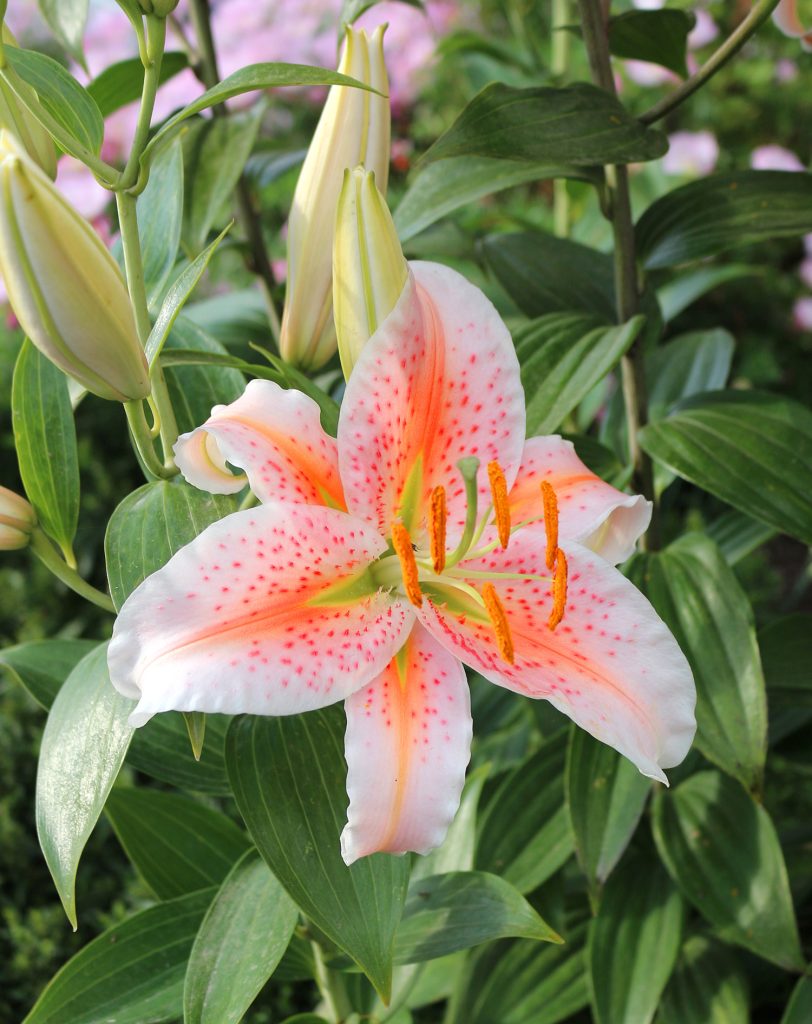
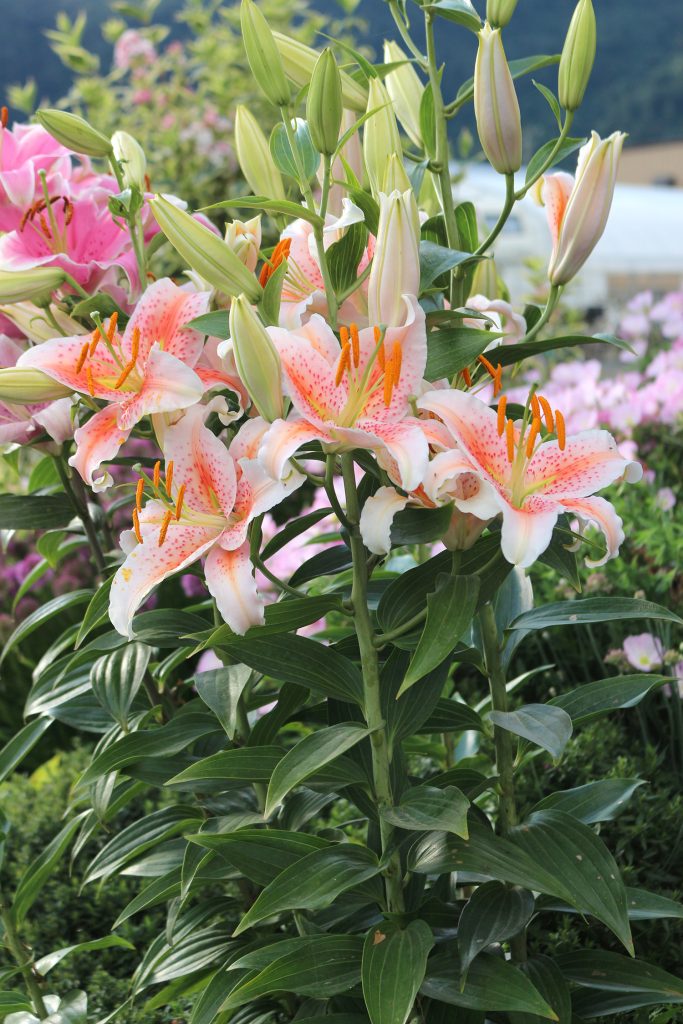
Rudbeckia brings everlasting colour to the garden border. One of our favourites is Rudbeckia ‘Goldsturm’, blooming from late July through October. The bright sunny yellow blooms with deep brown cones complement and enhance white, deep red, and purple-rose blooms. As an easy to grow perennial, it will form a neat clump in the border. Add the blooms to your bouquets and if you allow the last of the blooms in fall to produce seeds, they will feed the overwintering chickadees and goldfinches.
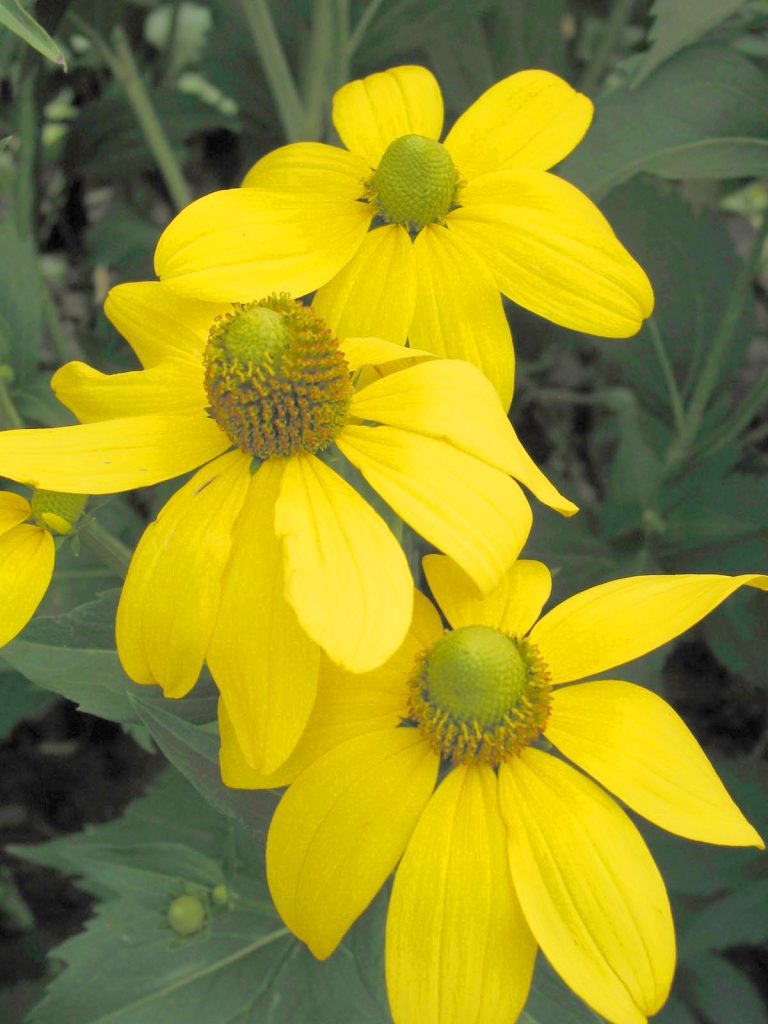
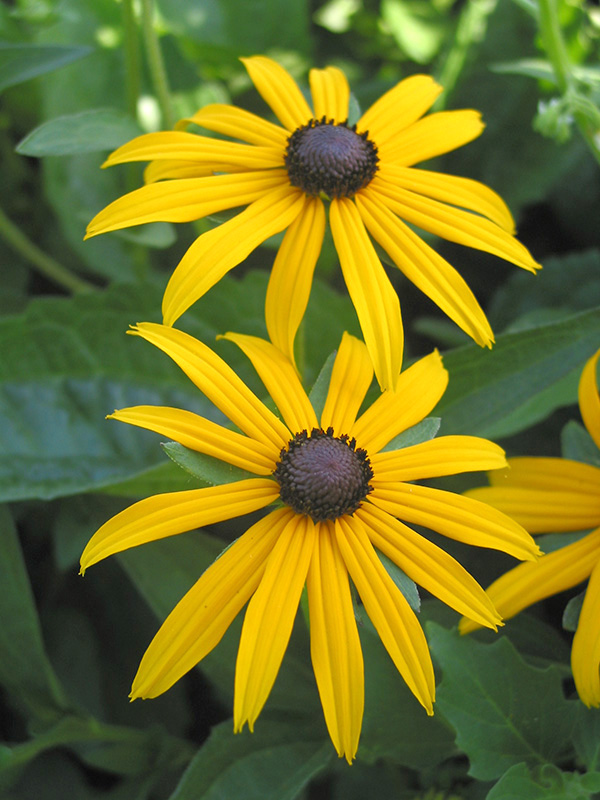
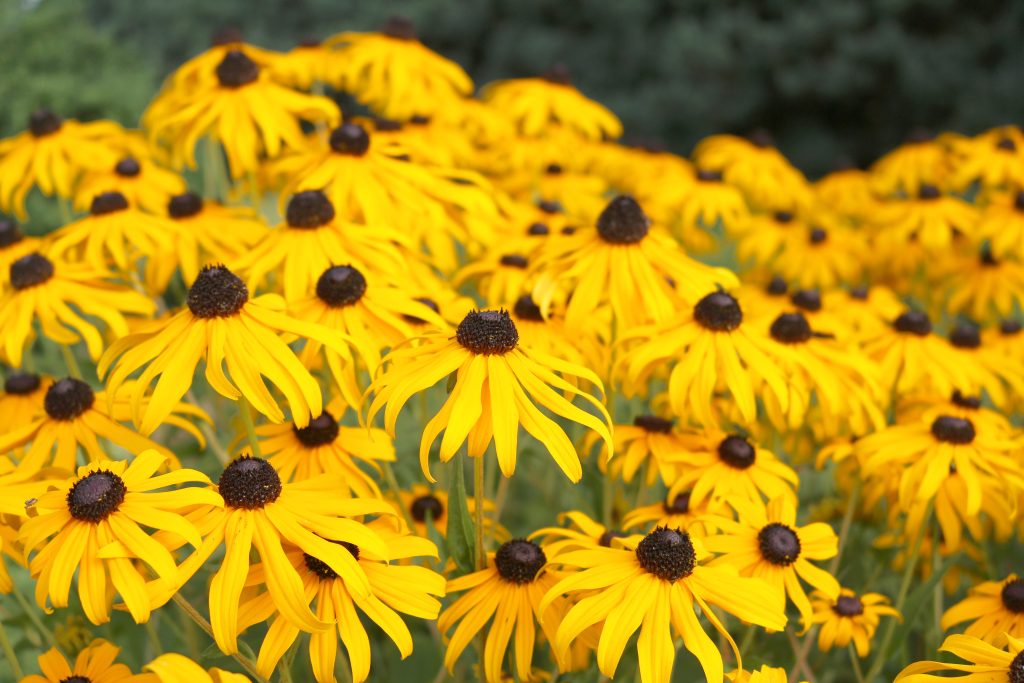
Some of our other tried and true mid-border rose companions are:
- Agapanthus Twister
- Astrantia Ruby Wedding
- Hemerocallis reblooming types
- Iris sibirica
- Leucanthemum Sante
- Lupine
- Paeonia garden types, Itoh Peonies
- Platycodon
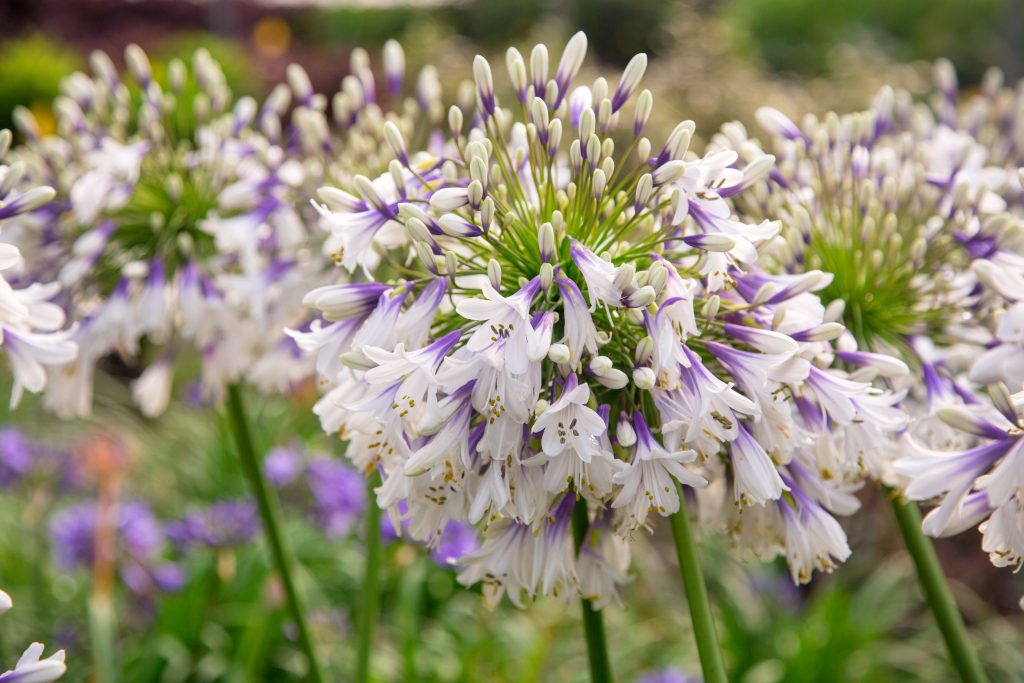
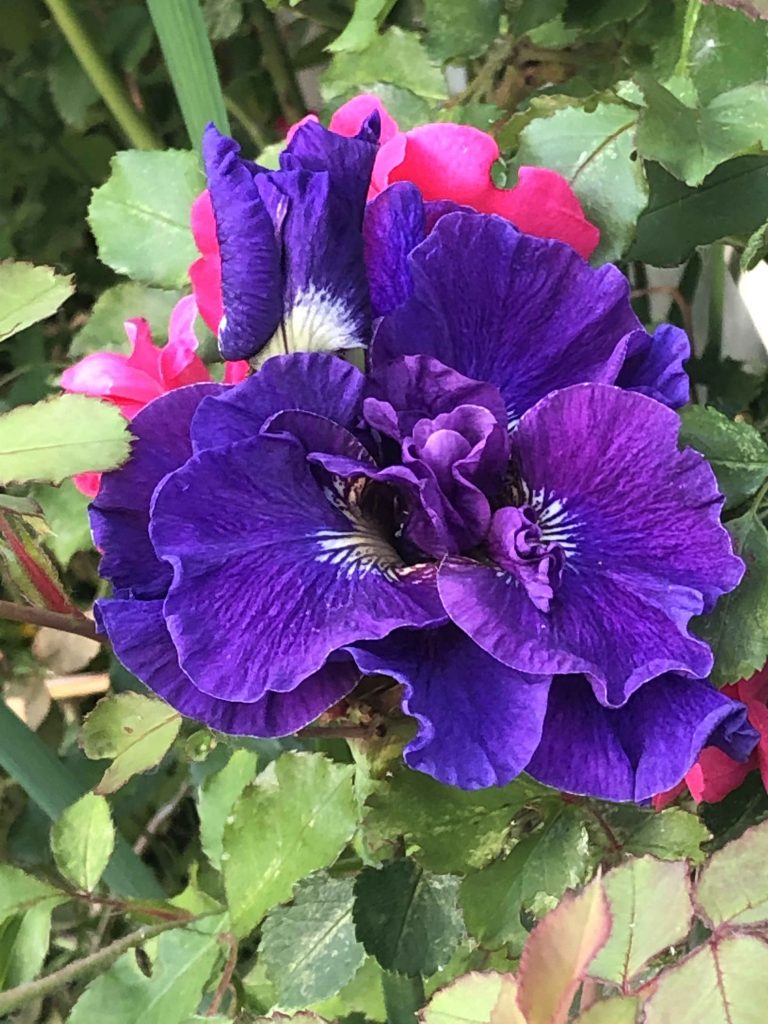
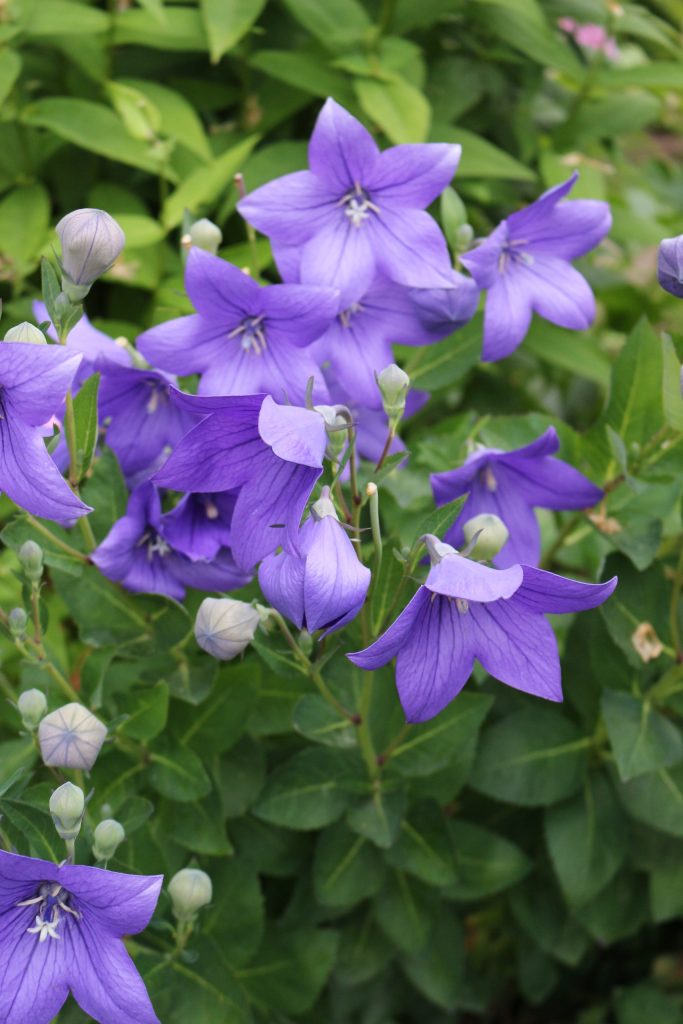
Back of the Border Companions
The back of the border provides a backdrop to frame your roses and soften structures like fences and building walls. As such an important role in the design of your garden, take time to consider which varieties you would like to use to enhance the drama of the border. Some of our favourites are actaea, delphinium and OT lilies.
Actaea atropurpurea, also known as bugbane or cimicifuga, has deep burgundy foliage that shines a spotlight on the plants around it. This large perennial grows to 150 cm (60”) tall and forms a clump that is 45 cm (18”) wide.
In June you can enjoy the tall spires of the Delphinium Magic Fountain series, commonly known as larkspur. Each stem is loaded with large, ruffled blooms which bees and butterflies love. As a backdrop for roses, these hardy perennials add English garden charm to your borders and soften the support structures.
A must-have for every garden are the giant OT Lilies. These lilies are a cross between oriental and trumpet lilies, and they are playfully known as lily trees. Once these lilies are established in the garden, they will reach towering heights of 1.5-2.1 m (5-7 ft) every season and be loaded with huge fragrant blooms. Remember to remove the faded blooms in and allow the foliage to encourage the bulbs to multiply in the ground.
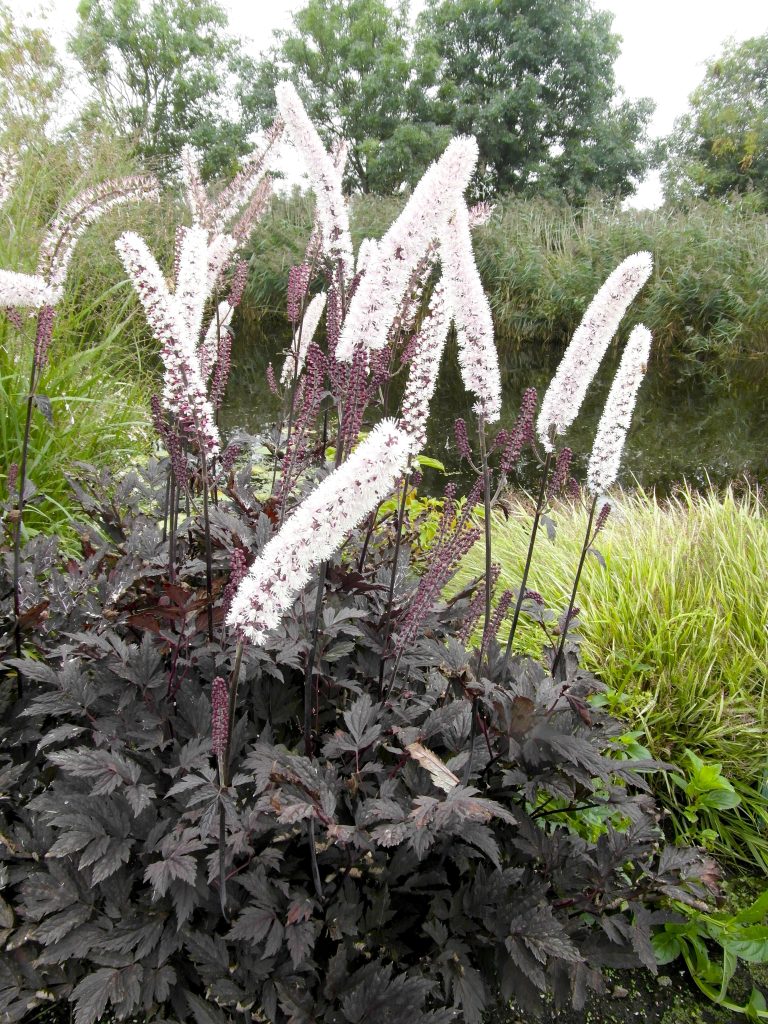
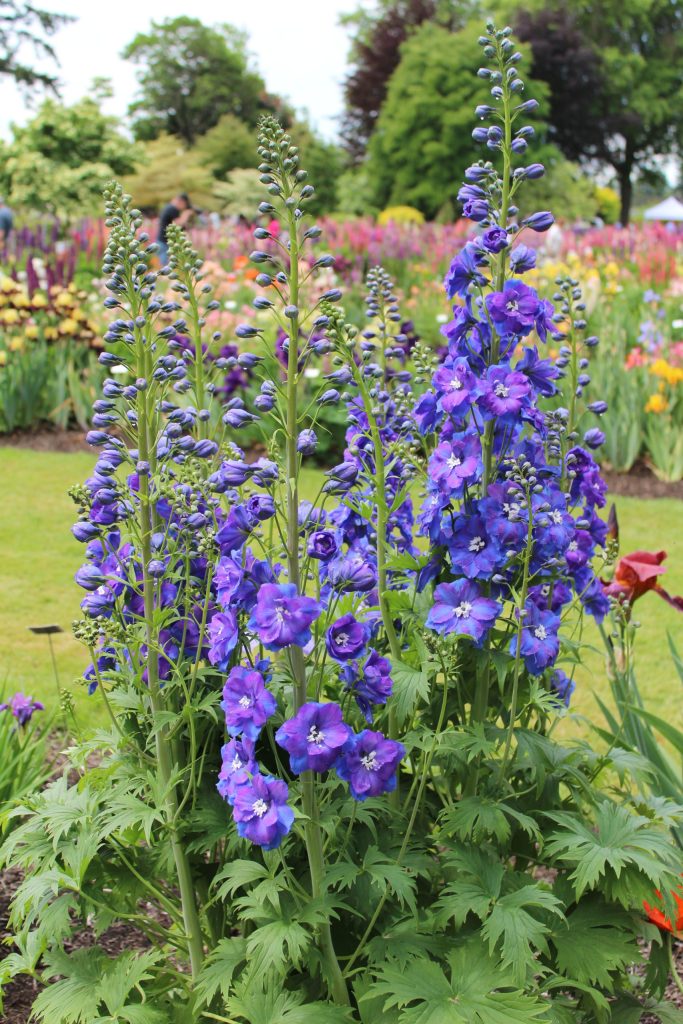
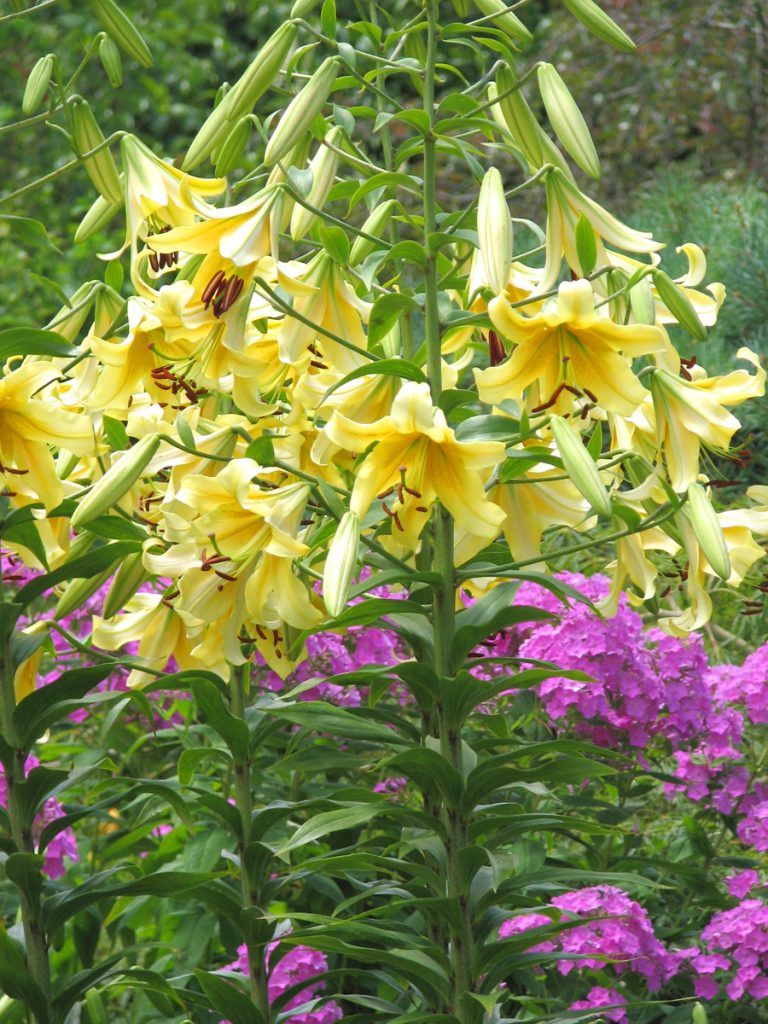
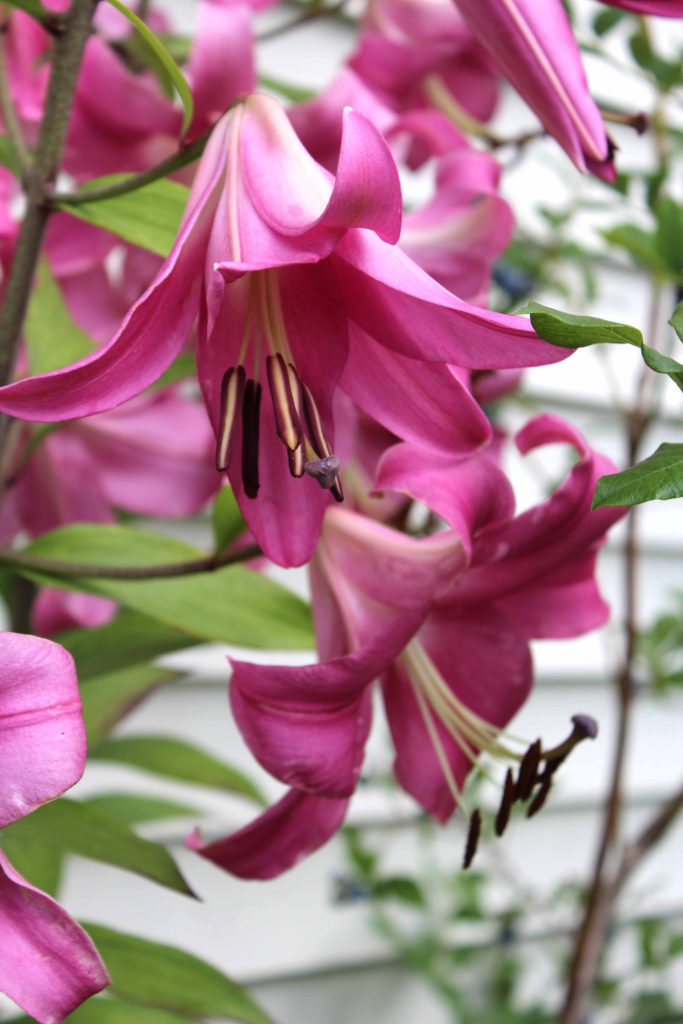
Other great options for height and drama at the back of the border are:
- Allium Summer Drummer (plant in fall)
- Malva Zebrina
- Panicum
- Rudbeckia Herbstsonne
- Veronicastrum album
Climbing and Rambling Rose Companions
So now that we have discussed complementary plants for rose borders, what about the climbing and rambling types of roses? There are amazing plants that perform wonderfully, and compliment roses trained on arbours, pergolas, and fences. The long arching canes of roses pair perfectly with clematis, lonicera and humulus.
Clematis, also known as the queen of the vines, are available in a full spectrum of colours. We recommend selecting varieties in the clematis pruning group B2 and C, as they can be pruned at a similar time of year and manner as your climbing and rambling roses. We do have a few favourite varieties like Jackmanii Superba, Rouge Cardinal and John Warren.
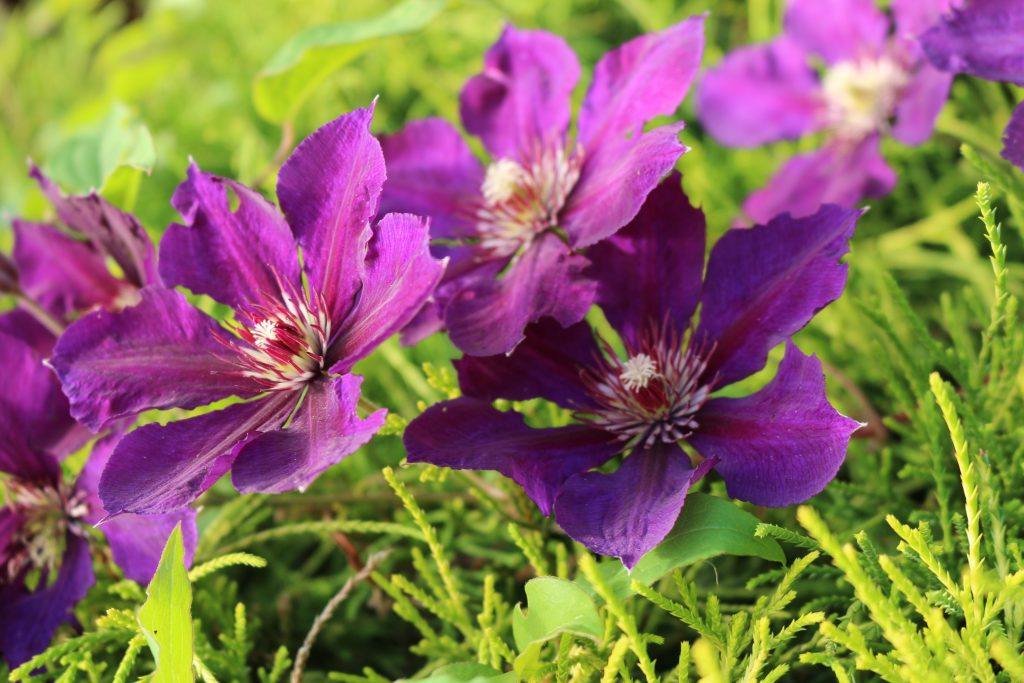
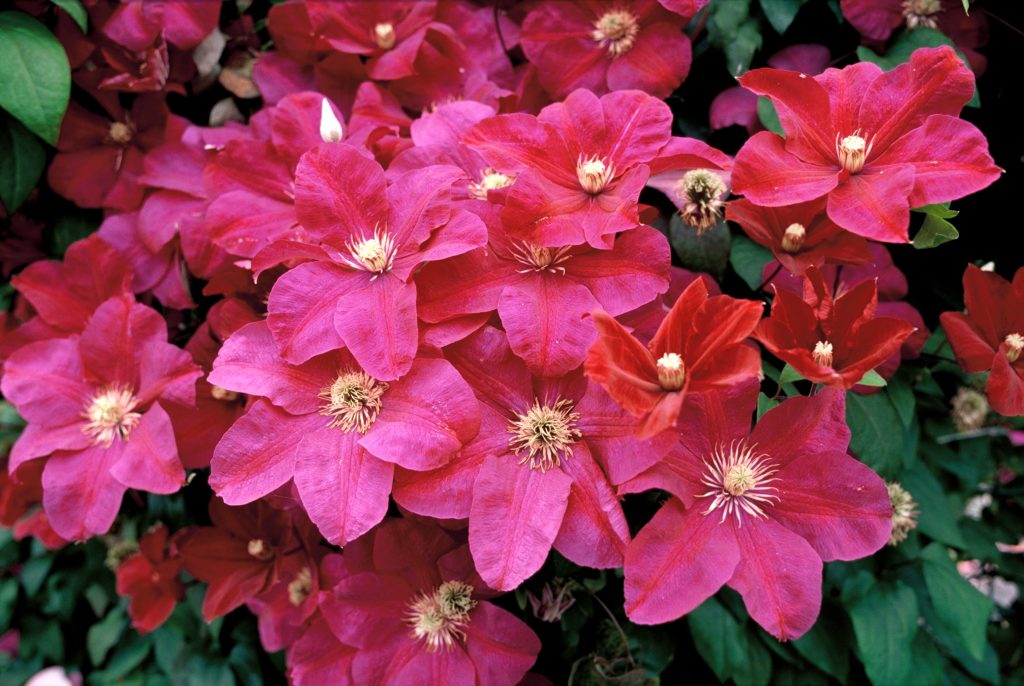
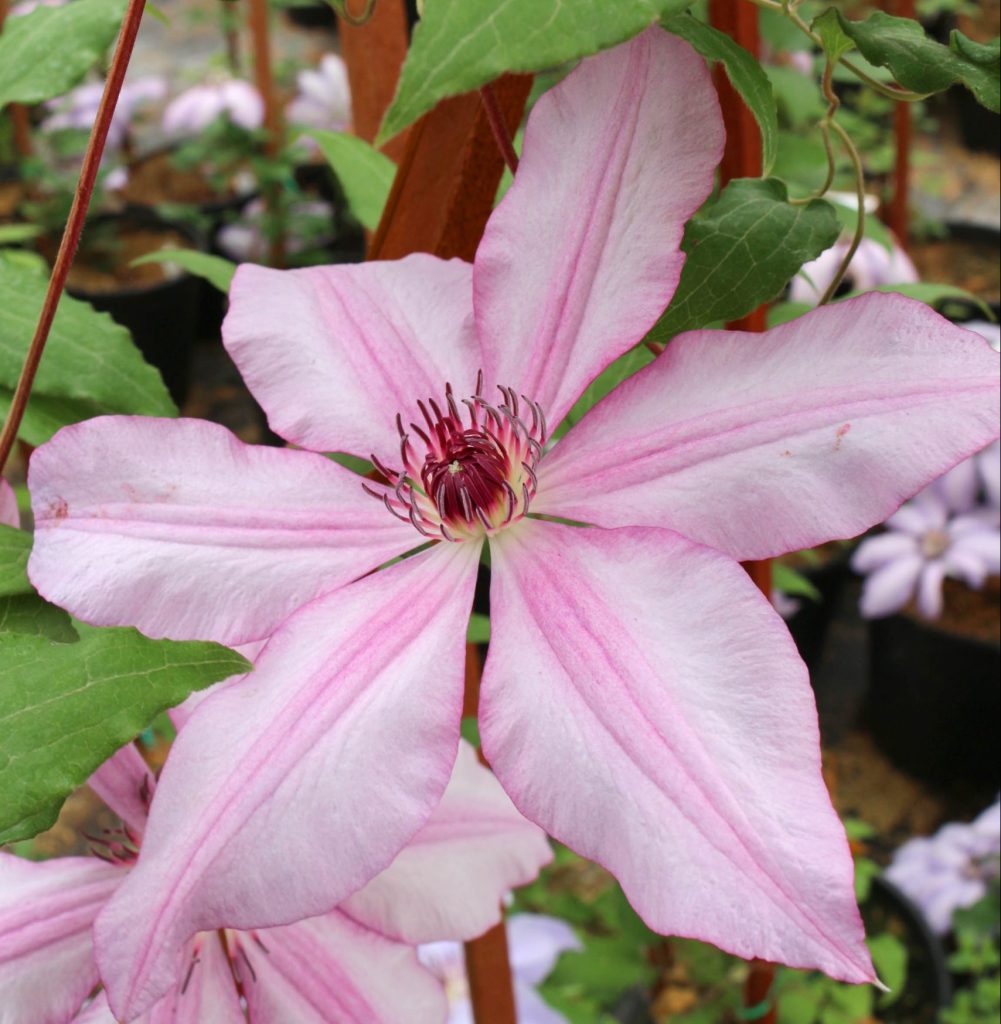
To enhance the fragrance of your rose blooms you can add Lonicera Belgica. These vines are known as honeysuckle vines, and they have long tubular blooms that the hummingbirds and butterflies flock to all summer long. The unique sweet fragrance of these blooms intertwines with fruity and spicy notes of roses to create a feast for the senses.
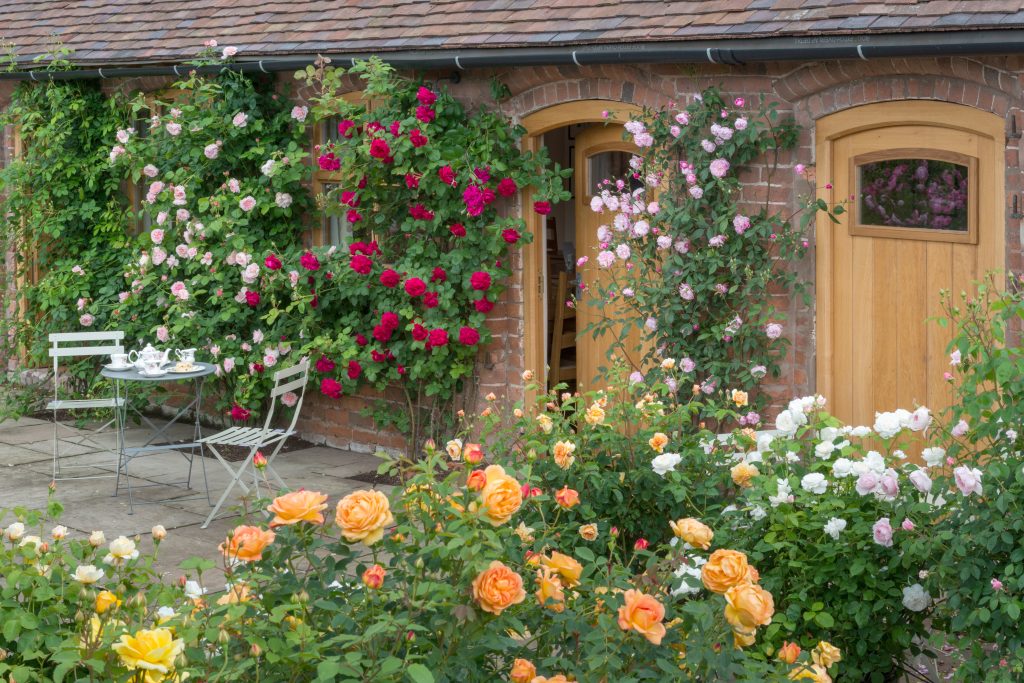
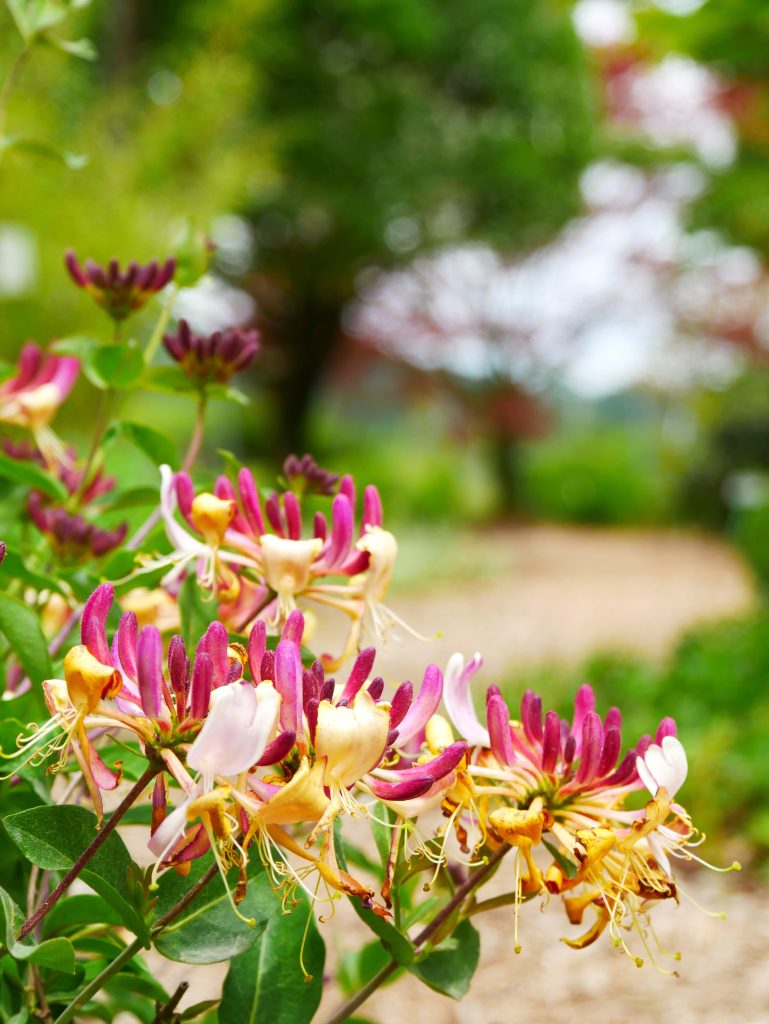
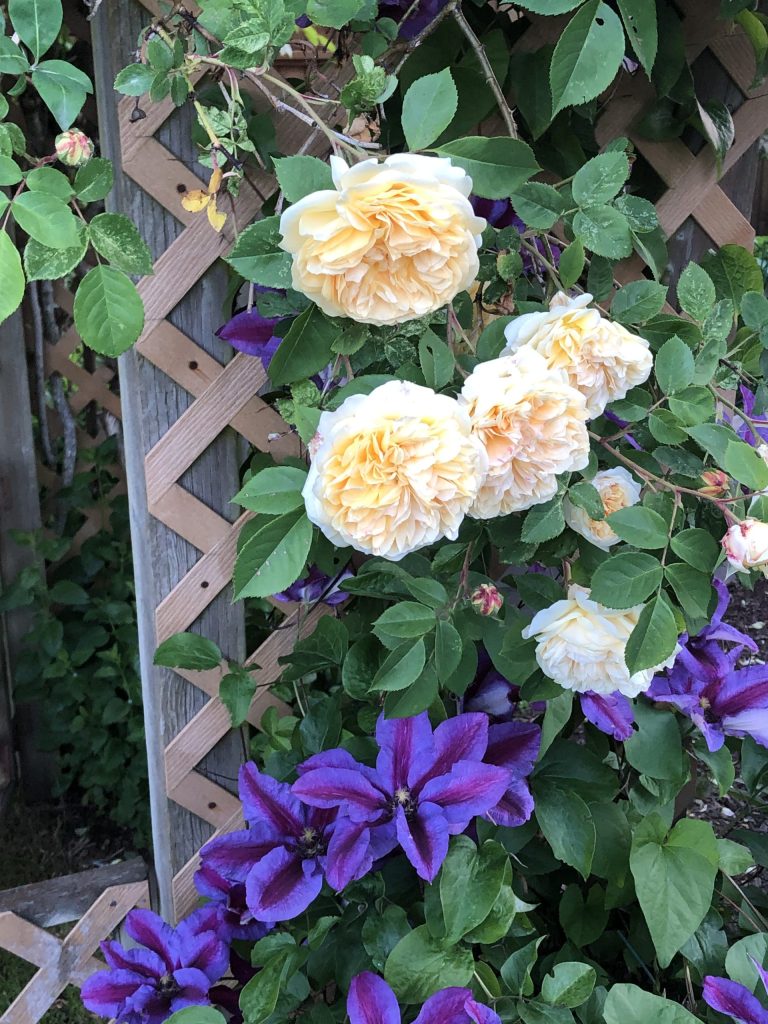
Humulus aurea is an ornamental hop that is sure to become a garden favourite with its chartreuse green leaves. The brightness of the leaves makes this a winning duo with climbing roses like Lady in Red, Tess of the Durbervilles, Claire Austin and Eden Climber. In late summer, you will be treated with clusters of unique blooms that add extra flair to arrangements and wreaths.
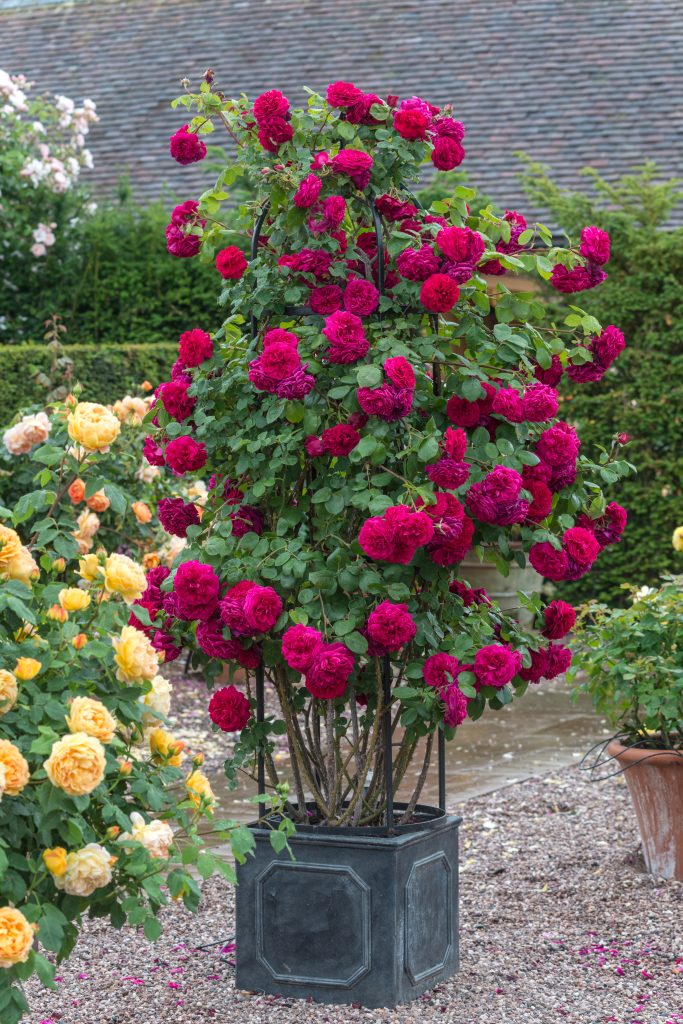
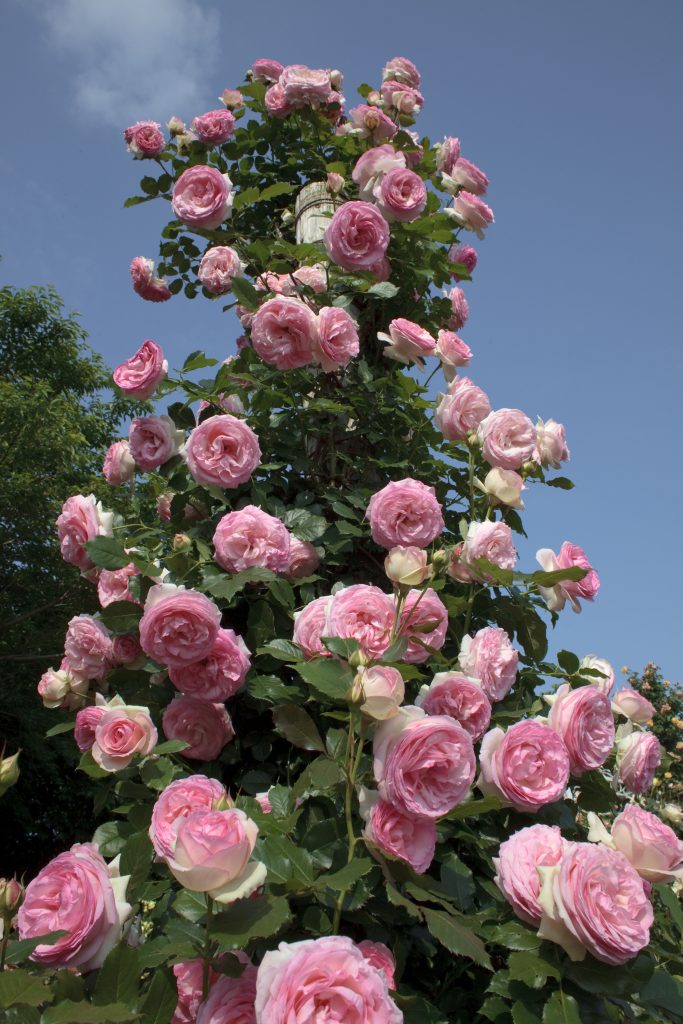
Container Roses
If your gardening space is limited, you can successfully grow roses in large mixed containers. Select a weatherproof container that is at least 50 cm (20”) across and deep with drainage holes. Then add in a good soil blend with 50% loamy soil and 50% compost. Next, add your rose and a few companions. Some of our long-blooming favourites for mixed rose containers are Hemerocallis, Veronica, and Salvia with Phlox subulata trailing over the edge.
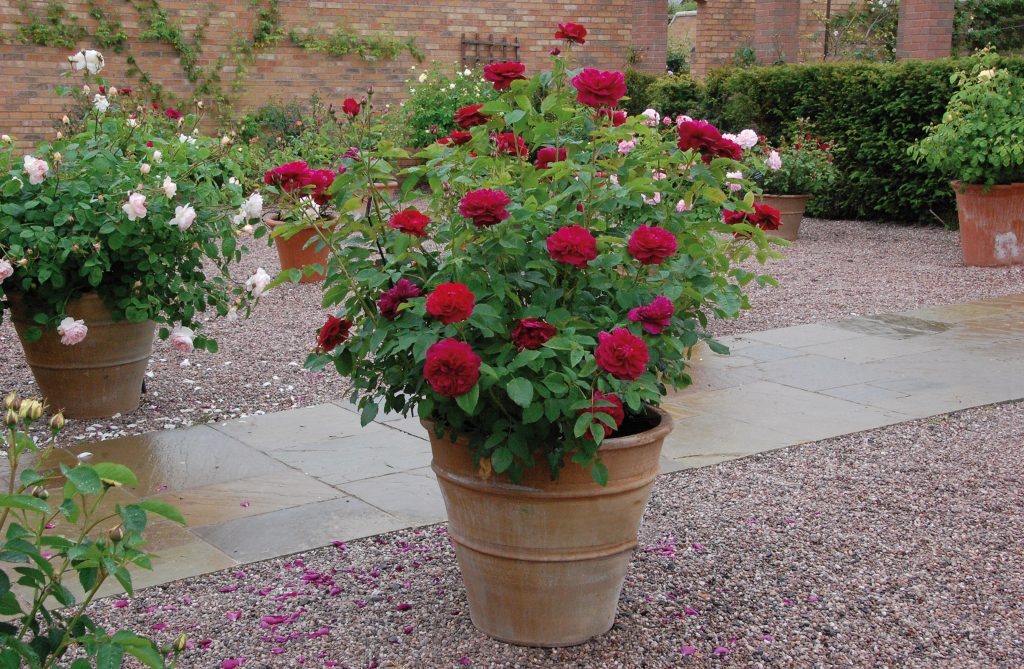
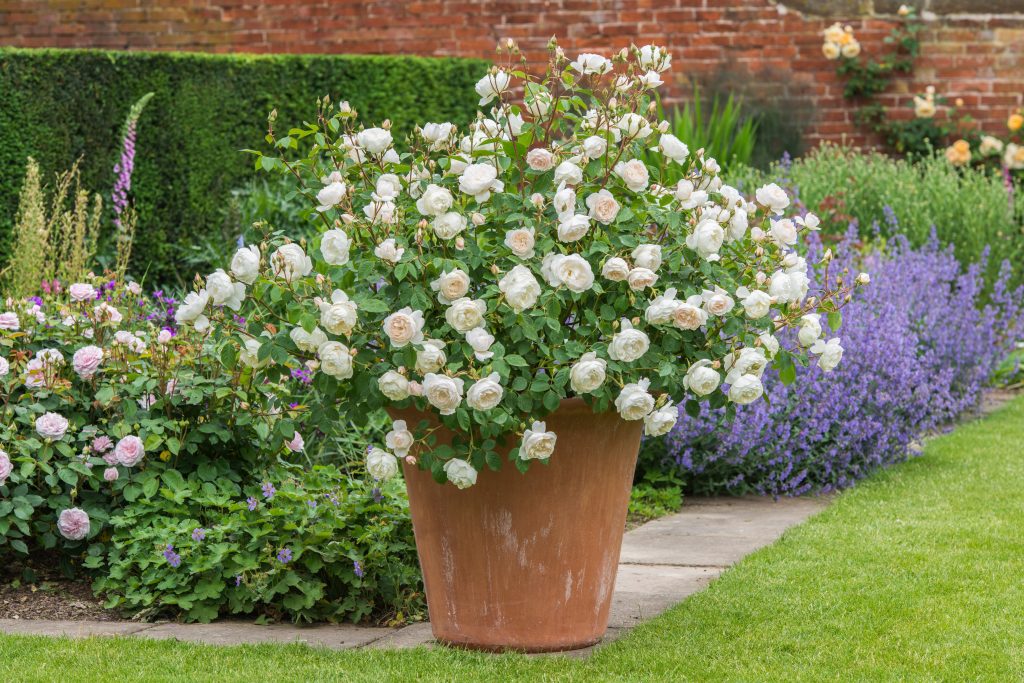
Caring for Your Roses
As you are planning and preparing to add roses and companions to your garden spaces, there are a few tips to keep in mind. First, prepare your soil, blend in mulch and compost to your loamy mix. Plant your roses first and allow them to get established in your garden borders. They will send out new roots and early competition for nutrients may hinder them. Next, consider the light requirements. Will the back of the border plants receive full or part sun when the rose is in full leaf? Find the right design and then the plants that fit the spaces. Remember to allow at least 30 cm (12”) around each rose bush for good air circulation. Next, plant and water. Roses need to regular watering during their early leafing out, heavy blooming times, and the extreme heat of summer. So be ready to always gently water at the soil level and not the leaves. Damp leaves are where black spot and mildew can cause seasonal problems.
Throughout the summer, remove faded blooms from your roses and companions to encourage more blooms. Fertilizing with an even balanced slow-release fertilizer at the end of spring and mid-summer will be all the roses and companions need to give you an amazing display all season long. In the fall the roses will go dormant and lose their leaves and it will be clean-up time for your companions too. You can also add some extra mulch over the bed for winter protection.
In late winter to early spring when the new growth is just starting, you can get your pruners sharpened and remove any weak, dead, and winter-damaged stems. Then you are ready for a spectacular display all summer long!



Yolanta Bertram
This is all very interesting and helpful information.
We have a clay tennis court and are wondering what to do with it. ?
I think a rose garden is the perfect idea.
Thank you
Jeannine
Hi! Are there David Austin climbers that are winter hardy for planting north of Montreal?
Florissa
Hi Jeannine – Montreal is noted as Zone 5 so almost all of the David Austin roses will be hardy for your area. The following climbing varieties are noted as even hardier to zone 4: Crown Princess Margareta, Gabriel Oak, Gertrude Jeykll, James Galway, St. Swithun and The Generous Gardener. Extra winter protection in colder climates will to protect from the dry winter winds will always be helpful.
Kathy
Thank you, thank you, thank you!! Even though I have a rose garden, I thoroughly savored “all” the information you provided in this article! I have saved it for future reference. Again I appreciate all the suggestions in this great resource!
Tazeen Nawab
Excellent article, full of important information for growing and taking care of a rose garden.